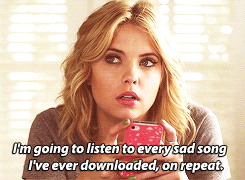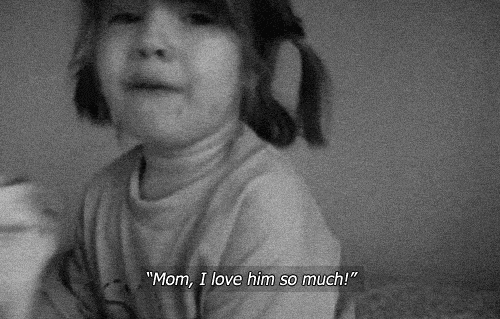#cabe joint
Explore tagged Tumblr posts
Text

Benefits of Using Cable Repair Sleeves:
Quick and Easy: Provides a fast and efficient way to repair damaged cables without the need for extensive downtime.
Durable Protection: Offers long-lasting protection against environmental factors, such as moisture, chemicals, and abrasion.
Versatile Application: Suitable for a wide range of cable types and sizes, making it a versatile solution for various industries.
Cost-Effective: Reduces the need for costly cable replacements by extending the life of existing cables.#upmheatshrink#shrinktube#repairsleeve@upmheatshrink#cablejoint#cablerepair
#cable protection#cable assembly#cabe joint#cable repair#shrink sleeve#heatshrinkable#upmheatshrink#heat shrink#factory#shrinkage#shrinksleeve
0 notes
Text
Aviones de vigilancia británicos patrullan toda la frontera oriental de la OTAN




Un avión de vigilancia RC-135 de la Royal Air Force ha sido desplegado este viernes para vigilar a las fuerzas rusas en la Ucrania ocupada. El RC-135W Rivet Joint y sus sensores están diseñados para llevar a cabo misiones de «inteligencia de señales». En otras palabras, «captan» las emisiones electrónicas de comunicaciones, radares y otros sistemas. La RAF ha informado en un comunicado: «El Reino Unido se ha convertido en la primera nación en realizar un tránsito completo por la frontera oriental de la OTAN, desde su punto más meridional en Grecia hasta el más septentrional en Finlandia. El avión de la RAF Rivet Joint completó el vuelo con el apoyo de los socios de la OTAN, incluidos los EE.UU., Suecia y Finlandia. Se trata de un momento histórico. Aunque el Rivet Joint realiza tránsitos rutinarios a lo largo de las fronteras de los distintos países de la OTAN, éste es el primer tránsito completo de la frontera oriental de la OTAN». Vigilar la frontera no es nuevo; de hecho, es bastante rutinario, lo que es nuevo es la duración del vuelo. El Reino Unido lleva recopilando información sobre las fuerzas rusas desde mucho antes de la invasión de Ucrania. Cabe señalar que estos vuelos están diseñados para ser visibles para que el público y Rusia sepan que están sucediendo. Si fuera un secreto, no lo sabría. Además, para los que comentan que «esto no es nuevo», es cierto, pero la gente sólo sabe que esto ocurre a menudo porque se informa de ello con frecuencia. Según el sitio web de la Royal Air Force, el RC-135W Rivet Joint es un avión de vigilancia electrónica especializada que puede emplearse en todos los teatros de operaciones en misiones estratégicas y tácticas. Sus sensores «absorben» las emisiones electrónicas de los sistemas de comunicaciones, radares y otros. «El RC-135W Rivet Joint emplea especialistas multidisciplinares en Sistemas de Armas (WSO) y Operadores de Sistemas de Armas (WSOp) cuya misión es inspeccionar elementos del espectro electromagnético con el fin de obtener inteligencia para los mandos.» La Royal Air Force afirma que el Rivet Joint se ha desplegado ampliamente en la Operación Shader y en otras misiones operativas. Su nombre oficial era Airseeker, pero en servicio se le conoce casi universalmente como RC-135W Rivet Joint. El Reino Unido opera tres de estos aviones. Fuente: Read the full article
0 notes
Text
Bill Gates y el Ministerio Mundial de la Verdad

Con la excusa de fortalecer el periodismo y proteger los cimientos de nuestras sociedades democráticas Microsoft, Adobe, la BBC y otras grandes empresas como Arm, Intel y Truepic se han asociado para crear la Coalición para la procedencia y autenticidad de contenidos (C2PA por sus siglas en inglés de Coalition for Content Provenance and Authenticity) que reúne otras iniciativas similares anteriores – Joint Develoment Foundation, Content Authenticity Iniciative y Project Origin – cuyo objetivo real, más allá del lenguaje eufemístico habitual en estos casos, no es otro que imponer el discurso oficial sobre los contenidos periodísticos y censurar o desacreditar cualquier visión crítica o alternativa. Una iniciativa totalitaria similar a la del Ministerio de la Verdad descrito en 1984, la famosa obra de George Orwell.
En la inquietante y visionaria novela 1984 de George Orwell el gobierno totalitario se ejercía a través de cuatro ministerios: de la Paz, del Amor, de la Abundancia y de la Verdad. Puesto que un elemento clave de la novela es lo que se denomina “doblepensar” esos ministerios designan en realidad lo contrario de lo que parecen decir. Así, el Ministerio de la Paz está dedicado a hacer la guerra permanente, el del Amor se encarga de asegurar los sentimientos de lealtad y amor de los ciudadanos mediante el terror, el de la Abundancia mantiene un estado permanente de pobreza y miseria y el de la Verdad se encarga de reescribir la historia y establecer el relato oficial del Gran Hermano (Big Brother) utilizando, entre otros recursos, a los medios de comunicación. Solo que en el mundo real presente no es el Big Brother quien te vigila y controla sino el Big Tech, es decir, el grupo que reúne a las principales empresas dedicadas a la tecnología de la información: Amazon, Apple, Facebook, Google y Microsoft… aunque algunos expertos incluyen a Netflix, Paypal y Samsung.
Hablamos de gigantes tecnológicos -popularmente conocidos como GAFAM o FAANG por las iniciales de las empresas mencionadas – cuya capitalización de mercado ha llegado en varias ocasiones a los dos billones de dólares y que a esos enormes capitales suman la tecnología más avanzada y presencia en todo el planeta pero sobre todo -en palabras de Jordi Gual, presidente de CaixaBank – “el principal activo de las big tech son los datos y su capacidad para extraer valor de ellos” .
Y es que ya no cabe la menor duda de que el futuro de la humanidad se está dirimiendo en nuestras mentes y es una guerra por la información, por el discurso o por el control de la verdad. Y si de algo podemos estar seguros es de que los Amos del Mundo lo saben muy bien y no cesan de ampliar y perfeccionar su arsenal para esa batalla decisiva.
UN PASO MÁS HACIA EL CONTROL INFORMATIVO TOTAL
Las élites económicas y políticas ejercen el control a través de una serie de herramientas entre las que destacan, en el caso concreto de la falsa pandemia, el engranaje sanitario (con la Fundación Bill y Melinda Gates a la cabeza) y el engranaje mediático (controlado principalmente por la Open Society de George Soros) con tentáculos en todos los rincones del planeta y ejerciendo dos funciones claves: la construcción y difusión mayoritaria del relato oficial y la censura o descalificación de los posibles relatos alternativos o críticos.
Asimismo [están implicadas] las grandes empresas de comunicación electrónica en la censura de información crítica a través de sus redes sociales: Google, Apple, Facebook y YouTube principalmente.
La presente iniciativa de Bill Gates es pues un paso más en la escalada del espionaje contra la información honesta e independiente solo que -asumiendo ya sin disimulo el más puro estilo Orwell- la iniciativa se plantea utilizando uno de los elementos más emblemáticos de 1984: la “neolengua”. Es uno de los pilares fundamentales del totalitarismo orwelliano y consiste en una simplificación del idioma eliminando conceptos o ideas que puedan poner en peligro la ideología dominante y uno de cuyos elementos importantes es el ya mencionado “doblepensar” que consiste en aceptar como verdadero lo que se sabe que es falso o en negar una realidad objetiva sabiendo que esa realidad existe.
Así, desde su misma denominación, la iniciativa de Gates utiliza la palabra clave “autenticidad” para referirse a los contenidos que van a impulsar e imponer a sabiendas de que son un puñado de falsedades.
Aunque de hecho todo el discurso y los textos de presentación de la Coalición repiten una y otra vez expresiones como “restablecer la confianza en el contenido digital a través de métodos que autentifican las fuentes” (que en neolengua significa descalificar toda fuente no oficial),“combatir la desinformación de los consumidores” (que en neolengua significa combatir la información verdadera),“contenido certificado” (validar como auténtica solo la información oficial), “empoderamiento de los consumidores para evaluar si lo que están viendo es confiable” (en neolengua controlar a las personas para saber si solo reciben las versiones oficiales o se interesan por otras), “detectar y frustrar contenido manipulado” (es decir, impedir que se difunda todo lo que discrepe de las verdades oficiales). Eso es lo que realmente se pretende aunque Eric Horvitz, responsable científico de Microsoft, lo presente así: “Hemos sido capaces de dar vida a soluciones prometedoras dirigidas a fortalecer el periodismo y proteger los cimientos de nuestras sociedades democráticas”, perfecto ejemplo de neolengua para decir que han encontrado cómo controlar toda la información, e imponer su voluntad a la sociedad [���].
EL MINISTERIO MUNDIAL DE LA VERDAD DEL BIG TECH
La Coalición para la procedencia y autenticidad de contenidos o C2PA es una agrupación que según manifestó Microsoft el pasado 22 de febrero tiene como miembros fundadores a Adobe, Arm, BBC, Intel, Microsoft y Truepic. La iniciativa reúne en una sola entidad proyectos anteriores como el Proyecto Origen de Microsoft y la BBC y la Iniciativa de Autenticidad de Contenidos liderada por Adobe.
Según la nota de prensa de Microsoft “el estándar abierto C2PA brindará a las plataformas un método para preservar y leer contenido digital basado en la procedencia” y añade que “dado que cualquier plataforma en línea puede adoptar un estándar abierto es fundamental para aumentar la confianza en Internet (…) la colaboración con fabricantes de chips, organizaciones de noticias y empresas de software y plataformas es fundamental para facilitar un estándar de procedencia integral e impulsar una amplia adopción en todo el ecosistema de contenido”. No se preocupe el lector si no ha entendido nada porque esa es precisamente la idea ya que estamos ante una declaración enteramente redactada en neolengua que pasamos a traducirle a román paladino: esa iniciativa utilizará sofisticadas herramientas digitales para que las empresas del Big Tech – Google, Amazon, Facebook, Twiter yApple – puedan saber de dónde procede la información; si se trata de un medio amigo -como la BBC o el New York Times– o si proviene de un medio alternativo en cuyo caso la información será catalogada inmediatamente de «bulo» o noticia falsa (fake news).
Así lo explica Elena Berberana en el diario digital Descifrado: “Los algoritmos trabajarán para desechar de Internet esa noticia calificándola como «engañosa». Es el punto más controvertido ya que cualquier medio que contraste un reportaje del New York Times y ofrezca otra versión que contradiga sus fuentes puede arriesgarse al destierro digital impuesto por la gran Coalición de Microsoft y sus socios”. Y añade: “El multimillonario ofrecerá a las Big Tech un software que permita seguir la pista de la información que su coalición cree «engañosa», ya sea un artículo en un blog, un vídeo en una plataforma, un párrafo en una red social o un meme. En cualquier caso, se identificará tanto al autor como a los que han consumido esa noticia falsa”.
La propia Directora General de YouTube, Susan Wojcicki declaró en una entrevista a la CNN que la plataforma prohibirá los videos que contradigan la guía de la OMS sobre la pandemia o que compartan lo que ella califica de “remedios falsos o no comprobados para erradicar el coronavirus”.
VIGILANCIA Y CENSURA EN ESPAÑA
Y el Ministerio Mundial de la Verdad covidiano – al igual que el orwelliano- no cesa de extender sus tentáculos asociándose a iniciativas similares que persiguen objetivos comunes: la imposición de las verdades oficiales y la supresión de toda disidencia. En España han surgido dos nuevas iniciativas en esa línea de “verdad/censura” relacionadas con la falsa pandemia cuyo relato viene sufriendo un proceso creciente de cuestionamiento crítico por parte de colectivos cada vez más numerosos y con mayor capacidad de influencia.
Por una parte, la Asociación Española de Vacunología, el Consejo General de Colegios Farmacéuticos, la Sociedad Española de Pediatría de Atención Primaria, la Asociación de Enfermería Comunitaria, la Asociación Nacional de Enfermería y Vacunas, la Escuela de Pacientes de Andalucía, el Instituto Balmis de Vacunas y el Instituto SaludsinBulos han puesto en marcha la denominada Alianza contra los Bulos en Vacunas considerando que “una de las principales amenazas contra la vacunación es la desinformación que circula en redes sociales”.
Caben pocas dudas de que quién está detrás de las entidades que conforman SaludSinBulos es la industria farmacéutica”. Asimismo, tras las declaraciones políticamente correctas de sus responsables se ocultaban realmente “las intenciones inquisitoriales de colectivos preocupados por la cada vez mayor cantidad de información crítica con el modelo médico dominante que defienden y en el que medran”.
Y casi simultáneamente ha surgido la llamada Alianza contra la desinformación, fruto de un acuerdo alcanzado por Google News Lab con la Asociación de Revistas de Información (ARI) y el Club Abierto de Editores (CLABE) cuyo objetivo declarado es «consolidar un relato veraz y en defensa de los valores de la democracia». Como puede comprobarse, una copia descarada de los discursos en neolengua que venimos citando y volveremos a citar a continuación. Y es que Google News Lab forma parte de los proyectos de Google organizados en torno a Google News Initiative que se presenta escuetamente diciendo que se trata de una “iniciativa de colaboración con el sector del periodismo para que prospere en la era digital”. Y si se pide más información lo que se nos ofrece es el ideario del proyecto resumido en cinco puntos: la importancia del periodismo de calidad, de la innovación, de la expansión digital de las noticias, de las oportunidades que ofrecen las nuevas tecnologías y de la colaboración con innovadores… Pura neolengua, una vez más.
GOOGLE: CONTROLANDO EL PERIODISMO DIGITAL
Entre los proyectos impulsados por esta iniciativa de Google se incluyen herramientas de formación tanto presenciales mediante acuerdos con escuelas de periodismo como talleres online y se vuelve a insistir en la innovación y la importancia de las nuevas tecnologías. Asimismo, entre los proyectos destacados se incluye el Google News Lab, “un equipo de Google News Initiative que colabora con periodistas y emprendedores para innovar en el sector de las noticias” y“abordar los desafíos más importantes del periodismo de hoy en día”. El punto número 1 de su modus operandi se centra en la lucha contra la “desinformación” y la “información falsa” y en ganarse la confianza de los consumidores.
Además, el Google News Lab tiene su propio centro de formación online para periodistas con numerosos cursos especializados sobre herramientas digitales de última generación desarrolladas por Google y cómo utilizarlas, incluyendo por supuesto un curso que permita a los profesionales “verificar la autenticidad de imágenes, videos o informes disponibles en las redes sociales o en internet”.
Uno de los consejos básicos que Google da no solo a los profesionales sino a los consumidores de noticias es que consulte los verificadores de hechos (fact cheking) e incluso dispone de un explorador de verificación de datos que recopila más de 100.000 verificaciones “de editores de renombre de todo el mundo”.
GOOGLE: INICIATIVAS COVID
Agregaremos que entre las iniciativas puestas en marcha por Google en relación con la Covid-19 destaca el Fondo Abierto de Lucha contra la Desinformación de la Vacuna COVID-19 destinado a “apoyar los esfuerzos periodísticos para verificar la información errónea sobre el proceso de inmunización COVID-19”, declaración en neolengua que significa que van a colaborar en reforzar las falsedades oficiales sobre las «vacunas Covid» y ocultar la información crítica que advierte de sus peligros. En este caso la colaboración se traduce en la financiación de proyectos periodísticos que, mediante un proceso de selección, se asegurarán de que estén dedicados a difundir el relato oficial. De hecho Google tiene previsto entregar hasta un millón de dólares a cada proyecto que pase su filtro (que en un principio incluye entre los requisitos para participar un historial demostrado de adhesión a las verdades oficiales). Obviamente lo dicen en neolengua: “Todos los solicitantes deben tener un historial probado en actividades de verificación y desacreditación de hechos o asociarse con una organización con tal reconocimiento”.
Añadiremos que la mayor garantía para Google de que eres un buen “verificador” consiste en ser miembro de la Red Internacional de Verificación de Datos, organización fundada en 2015 que forma parte del Instituto Poynter que a su vez está financiado por la Open Society de Soros, la Fundación Bill y Melinda Gates, Google y otras organizaciones similares como National Endowment for Democracy, Omidyar Network (E-bay) o La Fundación Arthur M. Blanck vinculada a la Fundación Rothschild.
En fin, entre los numerosos artículos publicados en la web de noticias internas de Google sobre el tema clave de la “desinformación” destacamos uno firmado por la doctora Karen DeSalvo – que se presenta como Directora de Salud de Google Health – y Kistie Canegallo -Vicepresidenta de Confianza y Seguridad- titulado Cómo encontrará información precisa y oportuna sobre las vacunas Covid-19. En él las autoras declaran que el ritmo de «vacunación Covid» no tiene precedentes y eso obligará a compartir información “para educar al público” lo que supone abordar lo que denominan “percepciones erróneas”, difundir la información oficial y “mantener la información errónea dañina fuera de nuestras plataformas. Aplicando el traductor a la “neolengua” lo que se pretende es machacar una y otra vez con la información oficial y censurar todo lo que la ponga en duda. Cabe resaltar que los paneles de información creados por Google que aparecen encabezando las búsquedas ya han sido vistos 400.000 millones de veces.
Esto por lo que respecta a nuestro país pero la censura se va extendiendo inexorablemente. Todo visitante habitual de las redes sabe perfectamente lo poco que dura un video crítico en YouTube y, de hecho, quienes tienen cosas “peligrosas” que decir hace tiempo que están migrando a otras plataformas que -por ahora- están a salvo de la censura. Aún así, autores controvertidos continúan sufriendo presiones, bloqueos o eliminación de contenidos. Así lo denuncia por ejemplo el conocido doctor Joseph Mercola que lleva décadas denunciando los abusos de las farmacéuticas y difundiendo información alternativa sobre salud y medicina. El pasado 4 de abril denunció en su web que la organización con sede en Reino Unido autodenominada Centro para la Lucha contra el Odio Digital (CCDH por sus siglas en inglés), que es en realidad uno de los principales grupos contrarios a la libertad de expresión en internet, le ha incluido en una lista negra publicada en Twittter que incluye a “las diez personas antivacunas que deben ser eliminadas de las plataformas digitales” . Un informe del CCDH titulado Anti-Vaxx Playbook considera a Mercola una de las seis personas “antivacunas” más influyentes de internet junto Robert F. Kennedy, Andrew Wakefield, Barbara Loe Fisher, Del Bigtree y Sherri Tenpenny. El CCDH admite que rastrea y espía 425 cuentas de Facebook, Instagram, YouTube y Twitter relacionadas con vacunas y que tienen en total casi sesenta millones de seguidores.
El doctor Mercola ya fue objetivo el pasado verano de otro grupo denominado Centro para la Ciencia en el Interés Público (CSPI por sus siglas en inglés) que lanzó una campaña contra él en las redes sociales y presionó a la FDA para que instara al doctor Mercola a que dejara de escribir sobre productos nutricionales relacionados con enfermedades respiratorias y la Covid-19.
En definitiva, la guerra por controlar las mentes se hace cada vez más cruenta y exige mayores esfuerzos por parte de quienes disponemos de recursos modestos para acompañar nuestra independencia y nuestras autoexigencias de rigor y veracidad. Nunca la información falsa al servicio de los poderes establecidos había provocado tanto daño a tantas personas. Y nunca la información crítica había tenido ante sí una responsabilidad tan enorme y trascendental, una responsabilidad que comparten las pocas personas que aún conservan lucidez y honestidad.
Jesús García Blanca
Revista Discovery Salud, nº 248
1 note
·
View note
Text
JOINT JADI AGEN ? HUB :0896-1282-1257 (WA/Call) Agen Bumbu Tabur Di Semarang, Agen Bumbu Tabur Di Surabaya, Agen Bumbu Tabur Di Tangerang, Agen Bumbu Tabur Jakarta, Agen Bumbu Tabur Kentang Goreng
JOINT JADI AGEN ? HUB :0896-1282-1257 (WA/Call) Agen Bumbu Tabur Di Semarang, Agen Bumbu Tabur Di Surabaya, Agen Bumbu Tabur Di Tangerang, Agen Bumbu Tabur Jakarta, Agen Bumbu Tabur Kentang Goreng
GOLDEN AROMA ada 150 lebih rasa Bumbu Tabur & Non MSG, Bubuk Minuman, Bubuk Essen tanpa Gula, Cabe Bubuk aneka level, Aneka Bubuk Rempah, & lainnya. Dapatkan penawaran menarik dan sensasi rasa yang kami tawarkan dan dapatkan keuntungan terbaik dari Kami. Terima kasih.
Golden Aroma Food Indonesia Bandung +62 813-2270-0999 +62 896-1282-1257 https://www.gafiseasoningfactory.com/hargabumbu.html https://bumbutaburnonmsg.weebly.com/
Agen Bumbu Tabur Malang, Agen Bumbu Tabur Samarinda, Agen Bumbu Tabur Snack, Agen Bumbu Tabur Solo, Agen Bumbu Tabur Surabaya
1 note
·
View note
Text
Del contrato de Joint Venture. [Ensayo investigativo]
Este es un contrato por el cual las partes, ya sean personas naturales o jurídicas, acuerdan una colaboración, por lo general de carácter empresarial, que permite y facilita el alcance de un objetivo beneficioso en común. Este contrato surgió a partir de la consciencia de la necesidad de un equipo o de una persona con la que, por temas de carácter funcional, su participación y colaboración generaría un bien mayor para los dos; Una complicidad estratégica de carácter temporal, donde se reparten obligaciones para el sentido de determinado negocio.
El otro lado de la moneda de este contrato, por así decirlo, es que gracias a la utilidad que surge del trabajo individual de las partes en sentido de un objetivo común, las mismas son conscientes de la incertidumbre que puede traer un negocio de este calibre, y acuerdan, así como las ganancias, los riesgos por los cuales están dispuestas a pasar; de los cuales se hacen responsables.
Cabe resaltar:
“(…) el “acuerdo entre dos o más partes que ponen en común sus recursos y colaboración para llevar a cabo una actividad comercial a través de la cual puedan obtener un beneficio mutuo, compartiendo el riesgo que conlleva toda operación empresarial en función de la estructura concreta a través de la cual acuerden desarrollarla” (Donoso, 2014. p.3)
Ahora, en la legislación colombiana poco o nada se comenta sobre esta figura contractual; es considerado un caso de atipicidad. Sin embargo, podemos hacer inferencia del mismo en el artículo 1501 y 1502 del Código Civil, el cual hace referencia al contenido de todo contrato de manera genérica.
Ergo, se pueden identificar elementos propios de un contrato en esta figura, tales como el objeto lícito en el beneficio que pretenden en la asociación alcanzar, la causa licita en la posibilidad del alcance de este objeto y, cómo no, la consensualidad de las partes al asociarse para este fin en común.
EJEMPLOS MÁS CONOCIDOS.
La doctrina señala tres tipos de Joint Venture; El de alianza estratégica, el de coinversión y el contractual.
El primero consiste en una mera sinergia de funciones para lograr un objetivo alcanzable para las partes. Si bien en estos casos es común la mera actividad comercial como aporte, el mismo no se prohíbe aportes en dinero. Todo lo anterior, como se verá siempre en esta clase de contratos, bajo criterios de necesidad por los contratantes.
El segundo, ya de carácter meramente monetario, consiste en el aporte de los contratantes para la generación de una utilidad que individualmente no hubiera sido la misma que en conjunto. Esto por lo general se logra y se media en la incorporación de nuevos mercados, compra de acciones y economías de escala.
El tercero y último se ven en casos donde las partes hacen actividades similares, y en las que por medio de un contrato u acuerdo se colocan mutuamente clausulas y condiciones dentro de sus actividades para la repartición de ganancias dentro de su actividad comercial. Aquí, el objetivo en común es sencillamente el beneficio equilibrado de las partes que, por lo general, suelen ser competencia.
DERECHO COMPARADO.
Ahora bien, este contrato atípico, si bien en evidencia carece de norma positiva, no lo exenta de tener historia a lo largo del planeta.
En el derecho comparado se ha podido precisar gracias al movimiento extranjero. Por ejemplo, en países como Rusia, en los años ochenta, cuando el periodo socialista aún estaba en vigencia, este contrato se dio justo por esta migración extranjera que pretendía la creación de empresa en el territorio. El extranjero solía colocar su capital para que la mano de obra, idea, proyecto o pequeño negocio del ciudadano local creciera y pudiera obtener de él beneficios. Todo esto trabajando “sobre la base de que el capital extranjero no podría detentar más del 49% de la empresa conjunta” (Gillén, 2007, p. 116); Esta modalidad aún está presente en la actualidad, y es cubierta por la ley.
El Joint Venture, cabe resaltar, apareció de forma adaptativa. Era de evidenciar que fenómenos sociales del calibre de la globalización afectaron e influenciaron la manera en que los hombres hacían negocios. Prueba de esto fue la, prácticamente, occidentalización del oriente; cultural y económicamente hablando. Países como China no solo utilizaron esta modalidad de contrato para la competitividad, sino que (se sabe, desde 1979) la hicieron parte de su modus operandi para el crecimiento económico territorial, siendo un contrato muy popular. Durante muchos años el gobierno dio la facilidad que más de cinco mil Joint Ventures entraran en vigencia, “con una inversión de más de tres mil trecientos millones de dólares durante una década que finalmente concluyo con la sanción de una nueva ley, en 1988 (la ley sobre joint ventures)” (Gillén, 2007, p. 119).
El caso de Latinoamérica, en países como el nuestro, a diferencia del avance que ha tenido esta figura alrededor del mundo, aunque no precario, si es algo arcaico.
La práctica en argentina de este contrato se refleja más en la figura del consorcio que en la de Joint Venture, por ejemplo. Esto trae trabas al momento de la afiliación y acuerdo temporal, pues la figura del consorcio no permite, como en los países anteriormente mencionados, la formación de personalidad jurídica, es necesario incluso la constitución de una agencia o representación para participar, denominado así por la legislación (ley 22.903), para la unión transitoria de empresas. Sin embargo, los derechos que ofrece la constitución argentina a los extranjeros que pretenden hacer negocios en el país son muy amplios, sugiriendo la posibilidad de que un contrato así se pueda realizar.
Cabe resaltar:
“Dentro de estas características las inversiones extranjeras en Argentina se han canalizado mediante aportes realizados por inversores extranjeros en sociedades locales, en las que participan en posiciones minoritarias, igualitarias o mayoritarias, lo cual se dio durante el proceso de privatización que vivió dicho país”(Gillén. 2007, p.127)
Es claro que el avance de esta figura, como se ha denominado a lo largo de la historia, incluso como en la historia misma del comercio o derecho comercial se ha visto, ha dependido del movimiento geopolítico, migraciones, ubicación y poder, de los países, lo que no extraña que países latinoamericanos, que no han tenido mucho protagonismo en el discurso internacional, no estén muy desarrollados y familiarizados con este contrato.
JURISPRUDENCIA
La jurisprudencia en Colombia, al igual que la legislación en Argentina, es consciente de que el contrato de Joint Venture es uno poco desarrollado en la legislación nacional, y que su participación en el diario vivir del comercio y los negocios aun así es cada vez más frecuente, lo que consecuentemente, al igual que su compañero territorial, ha ocasionado que sea reemplazado por la figura del consorcio y la uniones temporales, definido y regulado en la ley 80 de 1993, donde se expide motivado por el decreto nacional 679 de 1994.
La Corte Constitucional hace una contextualización al respecto:
"sin duda el fenómeno de la especialidad cada día va adquiriendo mayor preponderancia en el mundo de los negocios y del comercio. La mayor eficiencia y la menor ineficacia como condiciones de la implantación dentro del comercio de la llamada "ventaja comparativa" ha provocado la aludida especialidad. En razón a ello, cada vez se hace más necesaria la unión de dos o más personas con el fin de hacer factible la prestación de un servicio, la ejecución de una obra, etc., brindando cada uno mayor calidad y eficiencia en razón de su especialidad, y evitando así los mayores costos y efectos negativos que puedan derivarse de la realización aislada y particular de actividades respecto de las cuales no se es el más apto" (SC-414/94)
#derecho#ciencia#juridico#colombia#investigación#joint venture#jurisprudencia#contrato#colaboración#ley#ciencia juridica
0 notes
Text
C40 Clean Construction Declaration
C40 Clean Construction Declaration and Pledge, Net Zero Carbon Buildings News, Sustainable Architecture Design
C40 Clean Construction Declaration and Pledge
24 Nov 2020
City Mayors Pledge Sustainable Construction
C40 Cities connects 97 of the world’s greatest cities
Oslo, Los Angeles, Mexico City, Budapest Commit to Clean Construction, Moving the Industry Towards a Sustainable Future
Four leading mayors are initial signatories to C40 Clean Construction Declaration, pledging to work with industry to halve emissions from construction projects in their cities by 2030
Construction is responsible for 23% of the world’s GHG emissions
London, UK (24 November 2020) – Today, the mayors of Oslo, Los Angeles, Mexico City and Budapest have pledged to halve emissions from all construction activities in their cities by 2030, in collaboration with leading companies and innovative business communities.
Through the targets in C40’s Clean Construction Declaration, mayors pledge to revolutionise the global construction industry and shift it towards a more sustainable future, to achieve “a thriving, resilient and healthy life for everyone in our cities, especially our most vulnerable communities.”
The construction industry in its current form is responsible for more than 23% of the world’s GHG emissions and 30% of global resource consumption. If the construction industry continues to take a business as usual approach, the world is on track for a global temperature increase of 3°C.
The Declaration sets bold, ambitious targets to develop the net-zero emission buildings and infrastructure of the future by:
Reducing embodied emissions by at least 50% for all new buildings and retrofits by 2030
Reducing embodied emissions by at least 50% of all infrastructure projects by 2030
Procuring and when possible using only zero emission construction machinery from 2025
Deichman Bjørvika / Oslo Public Library building, Norway: photo : Fredrik Varfjell, C40
Recognising that cities cannot tackle the climate crisis alone, the Declaration places the circular economy as its core and calls for innovation and collaboration across cities, businesses, regional, national and supranational government and industry.
The Declaration commits cities to repurposing and retrofitting building stock to make better use of the buildings and infrastructure that currently exist, which also has huge potential to create new green jobs. Retrofitting reduces the need for raw building materials that have a high carbon footprint — concrete production alone is responsible for 8% of the world’s GHG emissions.
The mayors also commit to lead by example on clean construction, using their purchasing power and normalising the use of zero emission construction machinery, and demanding transparency and accountability in their supply chains. They aim to achieve this by embedding clean construction policies into design and planning, procurement and contracting processes, as well as building codes.
Finally, by signing the Declaration, mayors promise to approve at least one net-zero emission flagship construction project by 2025 and to produce annual reports on their progress.
The mayors’ shared declaration recognises the need for radical change in how cities approach construction. Clean construction principles can deliver a green and just recovery from the COVID-19 crisis; respond to the pressing issue of the climate crisis; improve air quality; and reduce inequality in the world’s cities. If successfully implemented, clean construction will create good, green jobs by investing in local and sustainable businesses and supporting workers. These will be particularly valuable in the recovery from COVID-19 and the associated economic impacts within cities.
The radical collaboration and coalition-building necessary to deliver the Clean Construction Declaration is evidence of the growing impact of C40’s Global Green New Deal coalition, first announced by C40 Chair and Los Angeles Mayor Eric Garcetti in October 2019.
Raymond Johansen, Governing Mayor of Oslo, said: “I am proud to announce our firm commitment to collaborate with business and industry to transform construction in Oslo and cities around the world for the better. The climate crisis is a global problem that requires global solutions. We need to unite businesses, industry and government on all levels to advance climate action. We must cut global emissions in half by 2030. The construction sector accounts for up to a quarter of global greenhouse gas emissions. Therefore, it must play a key part if we are to reach this goal.
“We are confident that the C40 Clean Construction Declaration will contribute in shifting the construction market globally. Together, we can remove fossil fuels and reduce emissions from construction sites altogether. This will make them safer, quieter, cleaner places to work, and will ensure that the air in our cities is cleaner and healthier to breathe. We challenge the Minister of the Environment to take action and ask cities worldwide to join us”.
Los Angeles Mayor and C40 Chair Eric Garcetti said: “The climate crisis affects every facet of our lives and every sector of our cities – that means we have to fundamentally change the way we operate across the board and revolutionize how we power our neighborhoods, consume natural resources, construct buildings, commute, travel, and lead. With the Clean Construction Declaration, Los Angeles is doubling down on the commitments of our local Green New Deal – and all of the signatories are laying the foundation for sustainable communities, standing up the pillars of green jobs, and drawing the blueprint for a just, healthy, and equitable future.”
Dr. Marina Robles García, Ministry of the Environment, Government of Mexico City, said: “Mexico City has a firm commitment to the best international sustainable building practices, not only because of the need to reduce the impact generated by construction and demolition waste, but also because of the potential in energy efficiency that can be achieved, thereby contributing to the achievement of the Sustainable Development Goals and the Paris Agreement from the local agenda. ”
Gergely Karácsony, Mayor of Budapest, said: “Budapest is a beautiful and exciting city with an incredible historical heritage and great architecture that we all adore. This, however, means a large building stock with rather poor energy performance and high GHG emissions, which have been worsened by the rapidly increasing traffic during the last couple of years. By declaring a climate emergency as one of our first measures after taking office a year ago, the Municipality of Budapest has committed itself to take active steps to reduce emissions in the city. Embodied emissions in construction activities and materials are uncharted areas, where large mitigation potential can certainly be found. Budapest wants to find its way to mobilise its ecosystem to make significant improvement in this field, which is why the city is delighted to be signing on C40’s Clean Construction Declaration.”
Nigel Topping, UK High Level Climate Action Champion, UNFCCC COP26, said:
“Cities have a vital role to play in accelerating the built environment transition to net zero through policy, influence, collaboration and advocacy for climate action. Committing to the Clean Construction Declaration is a step cities must take to fulfill this role and show leadership through dramatically reducing embodied carbon emissions from buildings and infrastructure. I implore all cities to commit to this declaration!”
Yu Fu, Director of International Cooperation, China Association of Building Energy Efficiency, said: “CABEE is pleased to be working with the C40 Clean Construction Forum to learn more about relevant policies and innovations, particularly as Chinese cities pilot work in this topic area.”
Cristina Gamboa, CEO of the World Green Building Council (WorldGBC), said:
“WorldGBC celebrates C40’s Clean Construction Declaration, an extension of our joint Net Zero Carbon Buildings Commitment / Declaration. Promoting leadership from cities that embrace a whole life-cycle approach is crucial to achieving our unified vision of total decarbonisation of the built environment.
“The Declaration, and the bolder leadership from policymakers behind it regarding their decarbonisation efforts, will create more confidence in the industry to deliver at scale the necessary investments to build back better.”
Lena Hök, Senior Vice President Sustainability, Skanska Group, said: “Skanska has set an ambitious climate target to reach net zero carbon by 2045, including our value chain, and by 2030 we aim to half our emissions. We have a strong will to work towards a more sustainable transition for the entire industry and cooperate with partners to drive sustainability innovations. The commitment from C40 sets a bold directive for this transition enforcing a life cycle approach for greener, healthier and more energy efficient buildings and infrastructure. We look greatly forward to co-operate on this journey together.”
Jocelyn Blériot, Institutions, Governments & Cities Executive Lead, Ellen MacArthur Foundation, said: “A circular economy approach that eliminates waste in all its forms from the built environment can have a significant impact on carbon emissions – whether that is through renewable material selection, modular and flexible design, efficient construction processes, reuse or recycling of building materials, or the increased utilisation of our buildings.
“City governments have a key role to play in this journey, and the Clean Construction Declaration is evidence of city leaders taking bold steps towards shaping a built environment that is resilient, safe, comfortable, cost-effective, and aligned with environmental targets.”
Edward Mazria, CEO and Founder, Architecture 2030, said: “Leading by example, C40’s Clean Construction Declaration and Pledge is central to decarbonizing the built environment and meeting the Paris Climate Agreement’s 1.5°C target.”
About C40 Cities
Around the world, C40 Cities connects 97 of the world’s greatest cities to take bold climate action, leading the way towards a healthier and more sustainable future. Representing 700+ million citizens and one quarter of the global economy, mayors of the C40 cities are committed to delivering on the most ambitious goals of the Paris Agreement at the local level, as well as to cleaning the air we breathe.
The current chair of C40 is Mayor of Los Angeles Eric Garcetti; and three-term Mayor of New York City Michael R. Bloomberg serves as President of the Board. C40’s work is made possible by our three strategic funders: Bloomberg Philanthropies, Children’s Investment Fund Foundation (CIFF), and Realdania.
To learn more about the work of C40 and our cities, please visit our website and C40 Knowledge Hub or follow us on Twitter, Instagram, Facebook and LinkedIn.
C40 Clean Construction Declaration and Pledge image / information from Dragonfly
Sustainable Buildings News
Contemporary Green Architecture Design – selection of posts:
Net Zero Carbon Buildings News photo courtesy Anders Vestergaard Jensen, unsplash Net Zero Carbon Buildings
Zero-carbon Interiors
Zero Carbon Buildings 2050 Report
House of Lords Zero Carbon Homes Ruling
2020: The Year of Net Zero photo © Richard Glover / Matt Estherby Sustainable Building News: Zero-Energy
Climate and Biodiversity Emergency photo : Tim Griffith Climate and Biodiversity Emergency
Zero Carbon House Bolton
Zero Carbon House Birmingham
Sustainable Architecture
Sustainable Architecture News
Sustainable Buildings
Sustainable Design
Sustainable Timber Architecture
Buildings / photos for the C40 Clean Construction Declaration and Pledge News page welcome
The post C40 Clean Construction Declaration appeared first on e-architect.
0 notes
Text
EL NUEVO PAPEL GEOPOLÍTICO DE LOS EAU

Por Leonid Savin
Traducción de Juan Gabriel Caro Rivera
Los Emiratos Árabes Unidos se han encontrado inesperadamente en el centro de la atención mundial después de firmar un acuerdo con Israel el 13 de agosto que cubre una normalización total de sus relaciones diplomáticas (1). Las conversaciones fueron mediadas por Estados Unidos. Por lo tanto, los Emiratos Árabes Unidos se han convertido en el tercer Estado árabe en reconocer a Israel (después de Egipto en 1979 y Jordania en 1994, ambos bajo presión de Estados Unidos).
Cabe señalar que los EAU están retratando su decisión de acercarse a Israel como una forma de prevenir la anexión de los territorios palestinos (2). En junio, el embajador de los Emiratos Árabes Unidos en Estados Unidos, Yousef Al Otaiba, publicó un artículo advirtiendo al gobierno israelí contra tales acciones y alabando el papel de los Emiratos en el proceso de paz de Oriente Medio (3).
La medida ha sido bien recibida por Estados Unidos, que la calificó como una gran victoria diplomática. James Carafano, del grupo de expertos de la derecha conservadora pertenecientes a la The Heritage Foundation, señaló que el histórico acuerdo de paz entre Israel y los Emiratos Árabes Unidos muestra que la política de Donald Trump en Oriente Medio está teniendo éxito (4). Este es solo el primer paso hacia la creación de una Alianza Estratégica en Medio Oriente, una idea ideada por la administración Trump como una forma de unir a Israel y las naciones árabes en un proyecto colectivo que garantizará la estabilidad y la prosperidad en la región. Estados Unidos jugará un papel unificador en esta alianza y brindará asistencia a cada uno de sus miembros. Entre los objetivos de esta prometedora alianza se encuentran la promoción de la integración económica, la prevención de conflictos regionales y crisis humanitarias, la lucha contra el terrorismo islamista internacional y la contención de Irán.
Los planes de Estados Unidos e Israel incluyen el establecimiento de un monopolio sobre la venta de armas a Oriente Medio evitando la competencia de Rusia y China (5). Los EAU serán un campo de pruebas, ya que es un socio clave para ambos países por su adquisición de armas modernas. La venta de aviones de combate multiusos estadounidenses F-35 a los Emiratos Árabes Unidos está actualmente en discusión. Israel ha dado su aprobación al acuerdo, mientras que el secretario de Estado de los Estados Unidos, Mike Pompeo, ha enfatizado que los Emiratos Árabes Unidos usarán los aviones para defenderse de las amenazas de Irán (6).

Funcionarios emiratíes e israelíes discuten futuros acuerdos de cooperación en Abu Dhabi el 31 de agosto de 2020
Las armas no serán el único vínculo entre estos países. Israel ahora tendrá libre acceso al petróleo árabe, que necesita para apoyar su industria manufacturera. Israel también podrá utilizar a los Emiratos como país sustituto para hacer tratos con otros países árabes y musulmanes, incluidos aquellos que no reconocen a Israel.
No hace falta decir que los líderes de varios países árabes y musulmanes, así como sus medios de comunicación, ya han expresado su preocupación por el acuerdo. También se ha sugerido que el acuerdo con Israel afectará directamente a la cuestión palestina (7), o más bien reducirá el nivel de apoyo que el mundo árabe brinda a los palestinos.
Mientras tanto, los líderes palestinos han rechazado el acuerdo, ya que reconoce a Jerusalén como la capital de Israel.
Turquía también ha reaccionado negativamente al acuerdo y prometió aumentar su ayuda a Palestina.
Las diferencias de opinión se están viendo como otra razón para la profundización de la crisis dentro de la Organización de Cooperación Islámica que podría conducir a su disolución.
Evidentemente, las condiciones previas para el establecimiento de relaciones diplomáticas se establecieron antes. Muchos creen que esto sucedió después del asesinato en 2010 del líder de Hamas, Mahmoud al-Mabhouh, responsable de la adquisición y la logística de armas, en un hotel de moda en Abu Dhabi. Fue drogado, electrocutado y luego asfixiado. En general, se considera que el Mossad llevó a cabo el asesinato (8).
A partir de entonces, las relaciones entre los dos países comenzaron a fortalecerse. También se ha observado que Israel está ayudando a los Emiratos a implementar medidas de seguridad domésticas utilizando tecnología de punta.
No hace falta decir que Estados Unidos no se ha quedado sin hacer nada en todo este proceso. De hecho, EAU ha comenzado a involucrar activamente a especialistas estadounidenses en sus proyectos. En 2017, se reveló que los Emiratos estaban reclutando activamente a ex agentes de la CIA para ayudar a establecer un nuevo servicio de inteligencia. La revista Foreign Policy señaló que los Emiratos estaban creando su propio imperio de espías en el Golfo Pérsico (9).
Es probable que se hayan logrado avances en esta área y los EAU ahora están aplicando una política más independiente.
Como señala el Instituto Alemán de Asuntos Internacionales y de Seguridad, “cada vez está más claro que los Emiratos han dejado de ser un actor secundario en Oriente Medio, incapaces de competir con los pesos pesados regionales de Egipto, Turquía e Irán. Más bien, el país ahora está ejerciendo una influencia mucho más allá de sus propias fronteras. Más recientemente, demostró con su retirada parcial de Yemen en 2019 que también es capaz de seguir un curso independiente con respecto a Arabia Saudita" (10).

El primer ministro israelí, Benjamin Netanyahu, el ministro de Relaciones Exteriores de los Emiratos Árabes Unidos, Abdullah bin Zayed al-Nahyan, Abraham y el ministro de Relaciones Exteriores de Bahréin, Khalid bin Ahmed Al Khalifa, juntos en el balcón del Salón Azul durante la ceremonia de firma de los Acuerdos de Abraham en el jardín sur de la Casa Blanca, el martes, sept. 15, 2020, en Washington.
El instituto cree que los Emiratos ya no son un socio menor de Arabia Saudita y actualmente persigue una nueva política regional con tres prioridades claras:
- Luchar contra los Hermanos Musulmanes en la región porque representa una amenaza para el liderazgo del país. Es por esta razón que los Emiratos Árabes Unidos están trabajando en estrecha colaboración con Egipto y apoyando al general Haftar en Libia. Esta es también la razón por la que las relaciones con Turquía se están deteriorando, ya que esta última se basa en las estructuras de los Hermanos Musulmanes en su política regional. La decisión de los EAU de enviar aviones militares a la región mediterránea para ayudar a Francia y Grecia también está vinculada a esta estrategia. Los Emiratos también apoyan el aislamiento de Qatar, que es el partidario más importante de los Hermanos Musulmanes.
- Oponerse a la expansión iraní en Oriente Medio. Esto no está sucediendo tan abiertamente como con los Hermanos Musulmanes, pero es una tendencia a largo plazo, especialmente considerando que los Emiratos tienen reclamos territoriales contra Irán. Tres islas, Abu Musa y las islas de Tunb Mayor y Tumb la Menor, están bajo el control de Irán, pero también están siendo reclamadas por los Emiratos Árabes Unidos.
- Controlar las rutas marítimas desde el Golfo de Adén hasta el Mar Rojo. Con este fin, se han establecido bases en Eritrea (Assab) y Somalilandia (Berbera), y los Emiratos Árabes Unidos tomaron el control de los puertos marítimos en Yemen mientras luchaban contra los rebeldes hutíes. La empresa emiratí DP World ha ido ampliando y gestionando los puertos de la región. Los Emiratos también son un importante centro logístico a través del cual los pasajeros aéreos pueden viajar a muchos países de todo el mundo. Es probable que las rutas marítimas sean de importancia militar y económica.
A pesar de la creciente independencia de los EAU, Riad y Abu Dhabi siguen siendo socios e incluso llevan a cabo proyectos regionales conjuntos. Desde el inicio de la operación militar en Yemen, por ejemplo, ambos países han estado apoyando financieramente a Sudán pagando al país para que sus militares participen en los combates.
Y, a finales de 2019, el Ministro de Estado de Asuntos Exteriores y Cooperación Internacional de los Emiratos Árabes Unidos, Anwar Gargash, anunció que los próximos doce meses serán "decisivos" en muchas áreas, y señaló al mismo tiempo que ya se habían logrado avances en varias cuestiones de la región (11).
Parece que el acuerdo con Israel es la culminación de los esfuerzos de los Emiratos para transformar su política interior y exterior. También está claro que no todos los países de la región están contentos con el nuevo papel de los EAU, que podría generar tensiones políticas y una variedad de conflictos.
Notas:
1. https://translations.state.gov/2020/08/13/joint-statement-of-the-united-states-the-state-of-israel-and-the-united-arab-emirates/
2. https://www.brookings.edu/blog/order-from-chaos/2020/08/13/around-the-halls-experts-analyze-the-normalization-of-israel-uae-ties/
3. https://www.brookings.edu/blog/order-from-chaos/2020/08/13/around-the-halls-experts-analyze-the-normalization-of-israel-uae-ties/
4. https://www.foxnews.com/opinion/israel-uae-agreement-trump-james-carafano
5. https://breakingdefense.com/2020/08/israel-juggles-arms-exports-as-uae-opening-ripples-across-mideast/
6. https://breakingdefense.com/2020/08/bibi-said-yes-to-f-35-sale-to-uae-eye-on-normalized-relations/
7. https://abc6onyourside.com/news/nation-world/israel-uae-pact-suggests-shift-in-arab-world-away-from-focus-on-palestine-conflict
8. http://news.bbc.co.uk/2/hi/8532009.stm
9. https://www.nytimes.com/2018/08/31/world/middleeast/hacking-united-arab-emirates-nso-group.html
10. https://www.swp-berlin.org/en/publication/regional-power-united-arab-emirates/
11. https://www.mofaic.gov.ae/en/mediahub/news/2019/11/10/10-11-2019-uae-minister
Fuente: https://orientalreview.org/2020/09/19/the-new-geopolitical-role-of-the-uae/
0 notes
Photo










Sorry for being abscent tumblr, I’ve been super busy with the work! I’ll make a mega update here to get us caught up, and ill upload more photos after.
Since unwrapping the environment I have taken it to substance, got all the maps generated, made some optimisations on render time (Still some noise but render time is at 18minutes at some points so wont push it any more - waiting to hear back from Sang on how good the render time is/optimised the scene is before i send render farm requests) and done my animating!! Phew!
The substance painter stuff was good fun - I learend some lessons with the character, and knew the best way to approach this was to put everything under one material that I wanted on one map. To that end I put the entire room (walls floor etc) as one material (due to its physical size and wanting to put text on the floor) and the objects within the room - computers, piping, platform etc - on another atlas. Both atlas’ were 4k, and the only exceptions to that was a few individual maps - one for the robotic arms holding her, as I made them seperate and couldnt/dont know how to combine maps, and one for the pistol (ill show in next post) as I did that after (I decided a couple days before starting animation to test myself to model, wrap and texture a pistol in one day - I did it!! :D
I messed around with colour palette a bit with the room. I wanted a dark ominous room, but felt that showing the room with grey or dark surfaces lost the clean room/labratory feel. I think its vitally important in a sci-fi environment to try to keep real world links as close as possibly as they act like markers for the viewer to follow. I.e. by maintaing an aesthetic in this room or a labratory or hospital with the clean shiney surfaces, and the screen terminals using words like testing etc, the viewer will hopefully understand that its a lab/test facility of some description for the robot - That’s the plan anyway. By making the room darker, it might all into question the use or purpose of building. For example. is she there to be interogated? Has she been captured? As opposed to thinking oh this is a new technology...
I’ve not done any animation before, so was both excited and concerned to start, although it was a nice change of pace and helped keep me interested with a change of the usual workflow.
Luckily, as my story focuses on her being restrained for a large majority of the film, I didn’t have any massively challenging animation to do. However this didn’t mean I would coast the work and get it done as soon as possible. I wanted to make sure her acting and performance read as clearly as possible, as I need her movements to be one of the key indicators of her “state” i.e. human, or robot. I also quickly created blendshapes for her - I planned on her being unable to emote, but I felt this was a bit of a cop out. I didn’t want her to open her mouth, sure, as I felt that was a one way trip to uncanny that I coulnd’t use within the story, and would make her impossible to empathise with (if I had time, sure it would be a fun experiment to see what worked better, but time isnt on my side). This did mean that her emotions were slightly limited , BUT, because i wanted her to see trapped in her own body, and like her faculties were limited (due to the fact her head has been removed and put on a robot!!) I think it worked well. I created blendshapes for fear, sadness, anger, a blink, and a frown (to augment the other emotions). I’m so glad I did these, as the became key in a few of the shots, and really make them pop, and make her “come to life”, so I’m pleased I took the time to do them.
The animation was fun, a few issues came up however, but for the most part it was pretty straight forward. I took some videos of myself doing some of the movements as reference for the animations. I tried to do it in a week or less, which I managed, to make sure that I stay on target time wise, and as I opted to use After Effects to show the screens, I wanted extra time to learn - I want the screens to flash and change, and thought it would also be a good oppotunity to learn how to use After Effects as I’ve not used it at all.
I’ve spent a bit of time too working on camera movement and set up. I’ve weant for a 25mm focal length for most shots to show as much of the set as possible, situating the camera more. I try to frame each shot as well as possible to make it look good, draw the viewers eye to key information, and on a few shots, frame screens so that they can get plot information as to what is going on. It’s been difficult to make sure the camera looks as natural as possible, and not like a maya camera, which is tough. Camera work itself is an entire artform in itself...
So, I want to discuss a few of the issues I’ve had and how I got around them or solved them.
So, as I mentioned I had some issues with the animatiom. These came from the rig, and the blendshape.
First of all the blendshapes for her face - as I think I mentioned before, I did blenshapes for her bicepts so that when she moves her arm, her biceps will tense and relax to show that movement. It’s very subtle and probably never be noticed, but it looks cool when you look for it, and it was a great learning experience. I had to move its order in the channel editor to make sure it moved at the right time within the rig, and it worked totally fine, and easier than I thought! I did the same with the shoulder muscles, but more as corrective blendshapes as the rig/deformations isnt perfect. However, the face blendshapes wouldn’t play ball... I tried adjusting their order, I tried every combination, I tried deleting their history and their transforms, nothing worked - everytime I applied them, her head would shoot off into the distance. I spoke with both Sang and Michael and Patrick Sloan, eventually the 2 Sloans worked out that by deleting the meshes post, and applying them all as one blendshape (originally I did them one by one) it worked. I tried doing them as one BS without deleting them and for some reason it didnt work. I took it as it was and even asked Sang if he knew why (he didnt). As long as it worked though, I didnt care...
The next issue with the rig was something that totally slipped by somehow; When I rotate her global control her chest and abdomen wouldnt deform right AT ALL. I had no idea how it happened and started freaking out. The 2 Sloans couldn’t work it out either. If I grabbed her chest and her global, she would rotate better, but her stomach would twist up strangely. Eventualy Sang diagnosed that the issue was the IK Spine not twisting right, and that I must have done something wrong during the rigging stage. This was super frustrating as I took my time with the rig and followed Sang’s video perfectly. It must have been one little step, a constrain or a parent, that i missed, omited, or applied incorrectly, and more than a month later, it came to the surface. I was especially confused/frustrated as I tested the rig post completion and binding to check, but obviously hadnt used the global control to twist her. Sang found a work around, but it did mean that one of her spine controls was lost. I then realised towards the end of the animating that a few of her poses caused strange deformations, like verts jutting our, or generally not following the rest of her body too well. I would go into weight paints and smooth out the issue as best I could even though I couldnt see anything glaringly obvious, like an arm joint effecting her lower stomach, but now that I’m processing this, I wonder if perhaps losing a handle reassigne weights and didnt do it right??
Another issue I had was her armor and torso/muscles being SUPER Shiny. I couldn’t work this out especially as she looked totally fine within substance. Initially I assumed it was an arnold render setting and that I hadn’t turned samples high enough, but after optimising the samples using Sang’s tutorla (which made the render time too high unfortunately) I realised the issue remained. One day I eventually decided it wasn’t right and that it wasn’t just me - it was too much. I worked my way through Arnold’s material settings, turning this up, down, off, every which way, to see if it effected the shine. I eventually found the culprit was Diffuse Roughness and nothing more, and that by simple adjusting the exposure/alpha in the settings, it reduced this shine completely. The way I set up my materials meant that it effected her whole texture (even though muscle/skin and armor are in different graphs) so I lost a tiny bit of shine to her skin, but I think it still looks fine - if anything before hand her lips looked too shiney, as if she had on lip gloss.
I also had some issues creating the cabling for her helmet. I needed the cabes to flex and bend with her as they moved. In my head the best way would be and IK set up. Initially I tried this, and I use a cube to measure the start and end points, and used an arc to create a perfect bend over the 90 degrees. This was a good idea, and the cable could go from a 90 degree bend to perfectly straight, but any additional bend didnt work and just turned the cable. I then started thinking about IK Splines, and watched a few tutorials online but couldnt get it to work. It made sense though, a spline would allow the perfect movement! Evnetually me and Sang spoke a few times and he was able to find a solution. An spline set up that didnt work like an IK and meant I had to do lots of manual adjustments, but for the most part it looks great. So for the small cables on the sides of her helmet, i kept the simple but effective “fire and forget” IK cables, and for the rear of her head I used the spline, as this area would move and twist much more. It took a while to create and solve, but meant that it looked good and only took a small amount of additional work to animate.
I will upload some more images, such as test shots, the pistol (which barely gets any screen time, but only took a day to work on so not a massive loss.
Only a few weeks to go! Waiting for Sang to get back to me on scene set up and optimisation, once that gets the green light I’ll start sending render farm requests!
1 note
·
View note
Text
Carlos Nodar golpea en Quess East Bengal, amenaza con acercarse a la FIFA si no se despejan los salarios

El español acusó al club de mostrar una apatía total durante el encierro en Calcuta debido a la pandemia de Coronavirus … El entrenador asistente de Bengala Oriental y el entrenador físico Carlos Nodar criticó a los inversores del club Quess Corp por el impago de salarios y la falta de cooperación durante el encierro en India. Nodar descartó las afirmaciones de Quess East Bengal y detalló la terrible experiencia que tuvo que enfrentar en la India. Cabe señalar que Nodar fue contratado con Quess East Bengal por un período de dos años hasta mayo de 2021. Quess Corp y East Bengal habían formado un Joint Venture (JV) y lo llamaron "Quess East Bengal" en el que el 70 por ciento de las acciones eran del gigante corporativo y el resto pertenecía al club. Sin embargo, Quess Corp ha declarado en numerosas ocasiones que no tendrían ninguna "obligación financiera" hacia la empresa conjunta después de mayo de 2020. Actualmente, las dos partes están buscando llegar a un acuerdo mutuo para resolver la salida de Quess y la transferencia de los derechos deportivos al club desde el JV. "No. No he recibido mi salario. Mi contrato con Quess East Bengal es por 24 meses y finaliza el 31 de mayo de 2021. Tengo que cobrar el salario de abril, mayo y un año más ya que no ha habido un acuerdo mutuo (terminación) en ningún momento. Serán notificados por carta en las próximas horas y si no hay acuerdo, iremos a FIFA para proporcionar más información si es necesario ", dijo Nodar a Goal. "Pedimos comida y agua mientras estábamos en Calcuta para nosotros y mi familia y nunca me dieron una respuesta. Había pedido un médico y mi médico en España finalmente tuvo que atenderme por teléfono. Solicité comida y dinero y también una forma de obtener electricidad en casa (durante Amphan) y no respondieron muchas veces ". La semana pasada, Quess East Bengal había emitido una declaración en la que afirmaban que Carlos Nodar se negó a viajar de regreso en dos ocasiones antes de finalmente ser repatriado el 18 de junio. "Los jugadores habían buscado constantemente beneficios financieros adicionales más allá de las obligaciones contractuales, pero Quess / Quess East Bengal FC no acordó lo mismo. Quess y Quess East Bengal denunciarían enérgicamente cualquier declaración infundada de jugadores / entrenadores sobre el incumplimiento de los términos del acuerdo como lo están haciendo individuos con intereses personales y personales ", declaró Quess East Bengal. Nodar, sin embargo, afirmó que ese no era el caso. “La disponibilidad de vuelos no estaba tan restringida y personalmente propuse opciones de devolución, pero siempre fue rechazada por un empleado de Quess East Bengal. Siempre decían que no había vuelos o que eran caros. Me puse en contacto personalmente con una empresa sugerida por la embajada para organizar el regreso. La compañía preparó un plan de viaje que incluía la fecha y los gastos, pero Quess se negó a aceptar. No se por que." Los inversores también habían afirmado que Nodar recibió un hotel de tránsito en Mumbai y se le reembolsó debidamente antes de poder tomar su vuelo a Madrid a través de Frankfurt. El español dijo: “Fue un largo y tedioso viaje de regreso a España. Mi regreso debe ser igual a mi llegada a Kolkata (por contrato). Mientras volvía tenía 60 kg de equipaje. He tenido que pagar dinero extra por el exceso de equipaje que no tenía porque no me han pagado desde abril (la nómina de marzo). El compromiso fue por dos temporadas (hasta 2021) ".
Además agregó: "Nunca se preocuparon ni les importó que les dijera que no tenía dinero y que tenía que pedirlo para poder llevar algunas de mis cosas a España". Ellos, a pesar de las circunstancias, se negaron a pagar los 6.400 INR adicionales que me hicieron pagar para volar a Mumbai con mi equipaje y también los 54 euros que pagué en Francia por las maletas. “Solo me dieron 1,000 INR para cenar y desayunar en Mumbai en el hotel. No se incluyó nada y finalmente, una vez más, fui yo quien, sin tener dinero, tuvo que pagar nuevamente pidiendo dinero a amigos y familiares, ya que es imposible cenar y desayunar en el hotel por ese precio. También cuando me dicen por escrito en un correo electrónico que está incluido y luego es falso ya que el personal del hotel me dice que nada está incluido. Guardo facturas por todo. Serán reclamados ". Nodar también explicó por qué decidió quedarse en Kolkata y no viajar con sus compatriotas el 4 de mayo cuando Juan Mera regresó a España. “En primer lugar, para el viaje del 4 de mayo, los jugadores y el cuerpo técnico de Mohun Bagan y Quess East Bengal (español) se ocuparon de todo con la embajada. “Siempre les dije a mis colegas (nunca a Quess, ya que no me lo propusieron en ningún momento) que no regresaría el 4 de mayo, ya que no es la condición de devolución que tengo por contrato y también Quess nos había notificado el 25 de abril con un correo electrónico sobre el cese de la actividad. “Otra razón importante por la que me quedo es que no tengo un acuerdo mutuo con Quess. Decidieron sin discutir conmigo. Queda por ver qué diría Quess sobre la versión de los acontecimientos de Nodar.
from Noticias Wincatchers https://noticias.wincatchers.com/2020/06/24/carlos-nodar-golpea-en-quess-east-bengal-amenaza-con-acercarse-a-la-fifa-si-no-se-despejan-los-salarios/
0 notes
Text
0 notes
Text
Scorpion 3x17: Dirty Seeds, Done Dirt Cheap
Scorpion faces their deepest, darkest fears.

“To steal Happy’s line, ‘not good,’” says Toby.

No one ever adopted Happy.

She’s the only child no one adopted.

Happy’s biggest fear is that Toby will reject her too.

Toby is her one last shot at a forever home.

Toby’s full attention turns completely toward Happy and the full psychotic break the love of his life is having.

All Toby can do is watch as his fiancé’s heart breaks.

“No, you promised to be with me for life! You proposed to me!” Happy exclaims.

“But I’m perfect for you,” she cries.

Happy is on the brink of death.

Because Toby knows his “little princess” best,

he gets in her head and talks her lucid.

In her dream, he appears as an eight-year-old boy at the orphanage.

Tobias introduces himself and asks if she has anything to eat. She gives him what’s left of her tuna fish sandwich from lunch.

Happy says, “I like your hat. I like you.” and he says “I like you, too.” He asks her to marry him. She says, “Uhh we just met and we’re eight.”

Toby drops the façade. “You know who I am,” he says. “And my biggest regret in life is that we really didn’t meet when we were eight, cus I would’ve fallen in love with you from that moment. The truth is you’ve never been alone. My love for you has always been there, it just took a while for our paths to cross so I could share it with you. And under all those neurotoxins in your head you know I’m right. You have nothing to be scared of, ever.”

Later that night, back home, Happy dreams of them holding hands as they walk back to the orphanage and fall in love as little kids. After the rough day she had, she deserves such sweet dreams.

Sylvester is afraid of chickens!

Paige has maybe a little too much fun playing along and teasing Sly, as the voice of his childhood bully, Bucky.

With the full support of his family, the cyclone, Sly will get the votes to win this election!

Badass, ex-football playing Marine, Cabe Gallo is a proud, older gentleman who enjoys steak, Conway Twitty, and getting senior discounts.

Cabe has got himself a girlfriend.

Cabe’s nightmare is his life is like an old 50s sitcom where the woman is too good-looking for the guy. He hallucinates he’s married to Allie, who is so mean(!!!) to him about his age. She tells him, “You were alive for so long before electricity was invented it’s still new to you,” “We could watch Jurassic Park! Might bring back some memories for you” and “What should I expect from a man whose social security number is one?”

With Paige’s help, self-improvement is Walter’s new passion.

Walter and Paige revisit the frozen yogurt shop where Walter was punched.

Walter apologizes to the vendor with whom he had a miscommunication.

Toby thinks the most logical thing is for Walter and Paige to just be good friends and that they won’t be anything more.

Much to Toby‘s surprise, Paige’s worst nightmare is Walter making out with another woman / Walter off the market and therefore not an option for her!

Happy, Sly, and Cabe are locked in vaults!

Happy, Sly, and Cabe fall unconscious.

Happy, Sly, and Cabe need to wake the f*** up!!!

They need immediate medical care or they’ll never wake up from their comas. In the middle of nowhere tundra, with the closest hospital two hours away and their doctor on another continent, Walter and Paige are up a creek without a paddle.

Toby is so smart! He figures out how to create a life-saving treatment.

Walter SMASHES a lamp!

The sparks from the electrical wires accidentally cause a chemical fire! If any of the purple flames reach the door, to the tunnel filled with very flammable oxygen, the whole building will blow to pieces! Kaboom! The flames Walter and Paige aren’t hallucinating are spreading. The unconscious members of Scorpion will suffer permanent neurological damage if they do not get treatment within the next few minutes, IF they survive the impending explosion!

If someone had to die, who should?

Best Guest: RAY!!!!!

Best Dressed:

Hottest:

Cutest Couple/Death of Me:

Best Lines:
Toby: How to Get Your Point Across in 30 Seconds or Less.
Allie: I feel like it’s my fault. Toby: It is.
Sly: I’ll tell Mr. Wiener! Happy: I don’t want to know what he was dreaming about. Sly: I was dreaming that it was the debate but jocks from my middle school were snapping their towels at me. Toby: Mr. Weiner? Sly: My middle school gym teacher. Toby: Thank God. Sly: In my dream, my boxers were made of pimento loaf. What does that mean? Toby: That you’re messed up.
Sylvester: Here is Sylvester - a chicken afraid of chickens.
Sylvester: It was terrifying.
Walter: Saying sorry is not a sign of weakness; it is a sign of strength.
Walter: Fear is irrational. You’re gonna scare yourself out of this election.
Cabe: Grandpas look cute in their glasses.
Paige: I don’t get the reference. Cabe: God, I’m a dinosaur.
Paige (to Cabe): You’re a darn good looking man with a ton to offer.
Paige: Best tires have some wear on them, right? Cabe: No, people prefer new tires.
Toby: I wanted to thank you for the yogurt. Also, I wanted to add… Paige: I know exactly what you’re gonna say. You and Walter have been spending lots of time together, does that mean you’re more than just friends? Answer: We’re not. Toby: Actually, I wanted to say that I think you’re doing a terrific job. Getting 197 to apologize?! That is amazing work. Paige: Thank you. Toby: De nada. Now if you’ll just hand over one of those froyos. Paige: Not til after lunch.
Paige: You stay toasty while we freeze our tails off? Toby: If the snow shoe fits.
Sly: Well this isn’t spooky at all.
Happy: You don’t need to warn me about getting lost in the blizzard. Been there, done that.
Happy: You don’t want to wander the dark tunnels alone? Sly: I’d prefer not to.
Paige: I worry about his maturity level. Walter: Don’t. Ralph’s very responsible. Paige: I was talking about Toby.
Ralph: There were no pirates on the Delaware.
Ralph: What Washington did was illogical. They were outnumbered, terrible weather… Toby: That’s exactly why he did it. He needed a bold move that no one saw coming. He faced his fear, he took action, and he was victorious!
Ralph: I know he likes my mom and the logical thing is to ask her out and the most common thing to beat logic is fear, so I figured he never asked her out cus he was scared.
Toby: I’m not trying to poop on your parade.
Toby: Let’s turn that frown upside down. You wanna eat everyone else’s froyo?
Paige: What the hell’s in there with him?! Get him out of there!
Paige: What’s wrong with him? Walter: I have no idea, but I know who to ask.
Toby: Bona fide fear responses
Toby: There are no chickens in there with you. Sly: They are all over! The cameras must be broken or something!
Ralph: What’s wrong with Sylvester? Toby: I don’t know buddy. But whatever it is it’s serious.
Cabe: My arthritis is acting up. Toby: You don’t have arthritis, Cabe. Cabe: Tell that to my hand. I’ve been trying to flip this breaker and it won’t budge. Joints are killing me. Toby: Again, they shouldn’t be because you don’t have arthritis.
Toby: Happy, listen to me. Anything you might be starting to feel is not real. It’s all in your head. Happy: Sorry, I gotta go. The bell just rang. Toby: What bell? There’s no bell. Happy, Happy there’s no bell.
Ms. Weldy: Prospective parents who are looking for that very special child to help them form a family.
Ms. Weldy: Best behavior, they will be watching.
Ms. Weldy: No wrenches, no wratchets
Ms. Weldy: A proper toy for a proper lady (a doll).
Happy: I’ll be better this time, Ms. Weldy.
Toby: Who the hell’s Ms. Weldy?!
Ralph: I’ll hack public databases, see if I can find a Ms. Weldy connected to Happy in some way. Toby: She’s my fiancé, I’ll do it.
Toby: Don’t go full zombie on me!
Allie: Arthritis acting up again, honey? Cabe: It’s killing me. Allie: Still working the fuse box? Cabe: I’m having trouble with it.
Cabe: What kind of casserole is that? Allie: Kale, flaxseed, macrobiotic grains.
Cabe: I’m not hungry. Let’s curl up on the couch and watch a movie.
Allie: A new club opened up and I’m going dancing. You wouldn’t want to come, would you? Cabe: Me, dancing? No, I can’t go dancing, on account of my arthritis.
Toby: He’s gonna wish the only thing he has to worry about is arthritis.
Sylvester: foul fowl.
Sly: Back away hens, I will deep fry the lot of you.
Toby: If you don’t listen to my instructions you are going to die.
Cabe: Don’t I know you? Ray: I don’t know. Do you? It’s your hallucination, brother.
Ray: So old he got a special thanks in the Bible.
Ray: His birthday candles caused global warming.
Ray: If he were to act his age he’d drop dead right here.
Ray: Which of the following things would Allie be shocked to learn didn’t exist when Cabe was born? Manned space travel, portable calculators, or tape cassettes? Answer: All of these. All of these things didn’t exist when Cabe was born, a full decade and a half before his current girlfriend.
Ray: What grade was Allie in when you married your first wife?
Cabe: Allie likes me just the way I am. Ray: All shriveled? Don’t think so.
Cabe: I don’t want to play this game. Ray: Well nobody does, but we all have to play it eventually.
Ms. Weldy: Wonderful news, children. So many of you have found your forever homes. When I read out your names you can go and meet your new mothers and fathers.
Toby: If a match is never struck, a fire can never burn.
Happy: Hello. I’m Happy. Dr Curtis: Are you? I’m a doctor of psychiatric medicine and I can tell right away you’re not happy. Happy: I’m just nervous, Doc. Toby: Doc?! Oh crap, she’s talking to me!
Dr Curtis: If I commit to her I’m stuck with her for the rest of my life? There’s got to be something wrong with her if she’s here, right? Happy: I try hard. I’m just a little different from the other kids.
Dr Curtis: Quick to anger. Volatile. I think I’d regret this decision.
Toby: She’s been alone since she was a child and I’m gonna put an end to that.
Tobias: I like Evel Knievel. Happy: I want a motorcycle one day.
Happy: No. I don’t care. Besides, I knew that nobody would want me cus I’m defective.
Tobias: We just exited the 90s. The Spice Girls had number one hits. Half the women in America are wearing a haircut called the Rachel and everyone’s investing in a website called AskJeeves. This is a decade where everyone’s making bad decisions, so anyone who doesn’t want you in their life that’s just another bad decision.
“Bucky”: Look at Sylvester hiding in a coop, just where a chicken should be…. Come out so I can pluck your feathers…. Aw, you want to go tell the teacher? Go pull this lever and go tell them!
“Bucky”: Coward! I knew all those stories about you weren’t true…. You jumped out of a plane, captured a poisonous snake, helped save a boy from a sinkhole…. No, you didn’t you wenie! Don’t dispute the facts! …Why is a hero hiding from chickens? I think it’s time you reconsider your facts, bucko.
Sly: Fact: I leapt off of a cruise ship. Fact: I went into a cave full of bats. Fact: I punched a man in the face in prison. Fact: What you did to me in sixth grade was mean, but I’m not scared of you anymore. Cus I’m a man and I can be brave sometimes, you little turd. And I’m still telling on you.
Walter: With age comes experience, knowledge, and wisdom. What you’ve forgotten others will never know and what you’ve lived others only read about. What you can do others can only dream about.
Cabe: God, is that you? You sound a lot less confident than I thought you’d be. Walter: That’s because I’m worried about you, but I shouldn’t be.
Paige: We have to go through ergot-saturated pathways. We’ll wind up whacked out and like how they were. Walter: Not if we don’t breathe in heavily contaminated air.
Toby: If you start seeing pink elephants, know that they are not real.
Cabe: I had a messed up dream.
Sly: Chickens!
Happy: Dirty hippies, gross.
Paige: Let’s go home.
Patel: Guess I scared Mr. Dodd off. Sly: I don’t scare that easy.
Sly: I would like to apologize for my lateness. I was out of the country, working for Homeland. Patel: For the record, Mr. Dodd is not employed by Homeland. He’s only an independent contractor.
Moderator: The comic book store seems to be the basis of your platform, so please address it.
Sly: I believe that eminent domain is abuse of government power. Patel: Really? Was it an abuse when the Erie Canal was built? Sly: No, but it’s not 1825 and the stakes are a lot smaller than enabling the American shipping industry to get from the Atlantic to the Mid-West. The matter at hand is taking private property to help not the populace, but a big box store. Patel: The kind of store grown-ups go to.
Sly: I had a tough childhood. I was picked on. Make-believe was my refuge. I found solace amongst the fantasy and I would gather up my courage to face another day. And trust me, when I was a kid I needed courage just to show up at school. And I need it now for my job. But the difference is, with Scorpion, I have a team to help me remember that I can be brave. And if The Warlock’s Chest will provide refuge for more kids who don’t know they’re brave yet, well, I want it to stick around.
Patel: Brave? You ran away from your problems by hiding in a comic store. Sounds chicken to me. Sly: Chicken? Sir, I know chickens. I have been around chickens. And I sir am no chicken.
Cabe: No Vegan Thrill. I hate that place. Allie: Been there a dozen times. Cabe: Hated it every time.
Cabe: I hate kale.
Cabe: I’m really crazy about is you. You’re the first woman I’ve really enjoyed being with in a long time. But I’ve got to know that you’re comfortable with me the way I am - a little weathered and stronger for it. Cus I can’t change who I am and I wouldn’t want to. Those years make me who I am. Allie: I like classic cars, vintage clothes, Sinatra. You fit right in my wheelhouse, Mr. Gallo.
Walter: See a fear of yours? Paige: No. Maybe. No. It was nothing. I got to get some air.
Tobias: I like your pigtails. Did you know the term pigtail comes from a twist of chewing tobacco? Happy: Just shut up and you can hold my hand. Tobias: Offer accepted.
#CBS Scorpion#Quintis#Happy Quinn#Toby Curtis#Scorpion#Walter O'Brien#Paige Dineen#Waige#Scorpion CBS#Sylvester Dodd#Cabe Gallo#Ralph Dineen#Ray Spiewack#Scorpion Review
54 notes
·
View notes
Photo

Y ahora los espectros de Marx. (Pero ahora sin coyuntura. Un ahora desquiciado, disyunto o desajustado, out of joint, un ahora dislocado que corre en todo momento el riesgo de no mantener nada unido en la conjunción asegurada de algún contexto cuyos bordes todavía serían determinables.) Los espectros de Marx. ¿Por qué este plural? ¿Es que hay más de uno? Más de uno puede significar multitud, cuando no masas, la horda o la sociedad, o también alguna población de fantasmas con o sin pueblo, alguna comunidad con o sin jefe -pero también el menos de uno de la dispersión pura y simple-. Sin agrupación posible. Además, si el espectro está siempre animado por un espíritu, cabe preguntarse quién se atrevería a hablar de un espíritu de Marx, más seriamente aún: de un espíritu del marxismo. No sólo para predecirles hoy día un porvenir, sino incluso para recurrir a su multiplicidad o, más seriamente aún, a su heterogeneidad. Hace más de un año tenía decidido llamar a los «espectros» por su nombre desde el título de esta conferencia de apertura. «Espectros de Marx», el nombre común y el nombre propio estaban ya impresos, estaban ya en el programa cuando, muy recientemente, releí el Manifiesto del partido comunista. Lo reconozco avergonzado: no lo había hecho desde hacía decenios -y eso debe de revelar algo-. Bien sabía yo que allí esperaba un fantasma, y desde el comienzo, desde que se levanta el telón. Ahora bien, acabo de descubrir por supuesto, acabo en realidad de recordar lo que debía de asediar[i] mi memoria: el primer nombre del Manifiesto, y en singular esta vez, es «espectro»: «Un espectro asedia Europa: el espectro del comunismo». Exordio o incipit: este primer nombre abre, pues, la primera escena del primer acto: «Ein Gespenst geht um in Europa -das Gespenst des Kommunismus». Como en Hamlet, príncipe de un Estado corrompido, todo comienza con la aparición del espectro. Para más precisión, con la espera de su aparición. La anticipación es a la vez impaciente, angustiada y fascinada: aquello, la cosa (this thing) acabará por llegar. El (re)aparecido va a venir. No puede tardar. ¡Cómo tarda!... #JACQUESDERRIDA #ESPECTROSDEMARX https://www.instagram.com/p/CQEBDgsjvLY/?utm_medium=tumblr
0 notes
Text
Ações do Itaú caem com resultado, enquanto Oi e Petrobras têm pregão volátil; Vale em leilão com venda de ações
SÃO PAULO – Em uma sessão de volatilidade para o Ibovespa, quem ganha destaque é o Itaú, que viu suas ações caírem mais de 3% após o resultado do segundo trimestre, mas diminuindo as perdas durante o pregão.
Enquanto isso, Petrobras também tem um pregão volátil após abrir em queda seguindo o petróleo, que tem baixa de mais de 1% (tanto os contratos brent quanto o WTI) com a alta de casos de coronavírus ofuscando a recuperação da demanda. Ainda na primeira hora do pregão, contudo, os ativos viraram para alta, perdendo fôlego minutos depois.
Esta sessão também marcou uma abertura em queda para os ativos da Oi que, contudo, também zeraram as perdas e passaram a subir, mas logo perdendo força. Na véspera, acabou o período de exclusividade da Highline para os ativos da operadora. Segundo informa o jornal O Globo, a companhia Oi deve seguir com as duas propostas que recebeu para vender sua operação de telefonia móvel. Segundo fontes ouvidas pelo jornal, a Highline, da gestora americana Digital Colony, e o grupo formado por Claro, Vivo e TIM seguem na disputa pela divisão de linhas de celulares da tele carioca.
Cabe destacar ainda que as ações da Vale (VALE3) estarão em leilão até 11h15 em meio a uma operação com forte venda de ações da companhia. Na véspera, a Bloomberg informou que o banco de desenvolvimento BNDES planejava vender até US$ 1 bilhão em ações da mineradora este mês.
Nesta data, vale ressaltar, o preço do minério de ferro à vista negociado em Qingdao teve nova alta, de 1,4%, a US$ 118 a tonelada, em meio ao maior otimismo sobre a recuperação econômica da China e com os investidores questionando a capacidade da mineradora brasileira de aumentar a produção do material.
Confira os destaques:
Vale (VALE3)
As ações da Vale ficarão em leilão até às 11h15. Conforme informações da Agência Bovespa, um leilão envolve 100.000.000 ações cada e terá a Merrill Lynch como corretora vendedora e compradora na operação.
A agência também cita Merrill Lynch como intemediadora de operação envolvendo 64.758.700 papéis. Também está previsto leilão envolvendo 17.834.000 ações, que terá a corretora Nova Futura como compradora e a corretora XP Investimentos como vendedora.
A operação acontece um dia após a Bloomberg noticiar, citando fontes de mercado, que o BNDES estava buscando vender US$ 1 bilhão de sua fatia na Vale neste mês.
Analistas do Itaú BBA citaram uma pressão de curto prazo nos papéis, em razão de ‘overhang’ (excesso de ações no mercado) no curto prazo, mas vendo a operação de venda pelo BNDES como positiva. Na visão deles, essa operação pode fechar parte do recente ‘gap’ contra seus pares australianos. O banco segue com visão positiva para a mineradora, destacando o desconto de 30% frente seus pares.
Oi (OIBR3;OIBR4)
Segundo informa o jornal O Globo, a companhia Oi deve seguir com as duas propostas que recebeu para vender sua operação de telefonia móvel. Segundo fontes ouvidas pelo jornal, a Highline, da gestora americana Digital Colony, e o grupo formado por Claro, Vivo e TIM seguem na disputa pela divisão de linhas de celulares da tele carioca.
Na última segunda-feira, terminou a exclusividade nas negociações com a Highline, enquanto Claro, TIM e Vivo apresentaram proposta de R$ 16,5 bilhões pela Oi Móvel, um valor acima da oferta feita pela Highline. Assim, o consórcio passa, agora, também a fazer parte das negociações. Segundo o jornal, a tele vai negociar com os dois grupos sendo que, até então, a Oi não podia analisar a oferta das rivais brasileiras.
Com isso, a decisão sobre a venda de ativos pode ser decidido até o dia da assembleia de credores da Oi, que deve ocorrer em meados de agosto no Rio de Janeiro.
Vale ressaltar que, na véspera, em meio à expectativa pelo fim do acordo de exclusividade com a Highline, as ações da Oi tiveram forte queda.
Banco do Brasil (BBAS3)
Em resposta a ofício da Comissão de Valores Mobiliários (CVM), o Banco do Brasil informou que cabe ao presidente da República a nomeação do presidente da instituição, e “que até o presente momento não houve qualquer comunicação formal do acionista controlador sobre o efetivo exercício dessa prerrogativa pela Presidência da República”.
Bradesco (BBDC3;BBDC4) e Banco do Brasil (BBAS3)
Os sócios da bandeira Elo (Bradesco, Banco do Brasil e Caixa Econômica Federal) querem fazer o IPO da marca, segundo reportagem do jornal “O Estado de S.Paulo”.
O principal interessado nessa operação seria a Caixa, que também quer fazer o IPO de sua subsidiária de meios de pagamento, a Caixa Cartões. No entanto, o Bradesco é o acionista maior da Elopar, que controla a Elo, e por isso preciso ser convencido sobre o IPO.
Atualmente, a estrutura acionária é composta por 56,9% da Elopar, uma joint venture entre Bradesco e Banco do Brasil, pela Caixa com 36,9% e pelo Bradesco diretamente com 6,1%. “Nossa visão é que, a depender de preço, pode ser positivo para destravar valor dos bancos e ficar menos exposto a um segmento com risco de disrupção tecnológica”, avalia a XP.
Cielo (CIEL3)
Após o Banco Central divulgar uma nota liberando os testes do WhatsApp Pay, desde que não sejam executadas operações reais com usuários, a Comissão de Valores Mobiliários (CMV) questionou a Cielo, adquirente parceria do aplicativo na operação de pagamentos, sobre a execução dos testes com a nova plataforma no mercado.
A empresa informou que a nota diz respeito aos acordos entre o regulador e as instituidores de arranjo de pagamento e que não participa destas discussões, “das quais não foi formalmente notificada”, segundo informações do jornal Valor Econômico.
A Cielo reforçou que continua seguindo o que informou ao mercado, por meio de comunicado em 24 de junho, quando o BC determinou a suspensão das operações com a utilização do WhatsApp Pay, cujo dono é o Facebook. Leia mais clicando aqui.
IRB (IRBR3)
O IRB comunicou ao mercado que os acionistas Bradesco Seguros S.A., por meio de sociedade de seu grupo econômico, e Itaú Seguros S.A. realizaram aporte de recursos, no montante de, aproximadamente, R$ 600 milhões, no âmbito de aumento do capital social via subscrição privada da companhia.
Um aumento do capital social de até R$ 2,3 bilhões foi aprovado no último dia 8 de julho pelo conselho de administração da resseguradora, e contribuirá para o reenquadramento da companhia aos critérios definidos pela Susep para cobertura de provisões técnicas e margem adicional de liquidez regulatória.
O aporte de Bradesco Seguros e Itaú Seguros é consequência da subscrição e integralização de ações decorrentes do exercício de direitos de subscrição, uma vez haviam se comprometido a acompanhar o aumento em suas participações proporcionais no capital do IRB, de cerca de 15,4% e 11,3%, respectivamente.
“O anúncio, apesar de já esperado devido a anúncios anteriores, pode ser bem percebida por investidores, uma vez que reforça a presença dos bancos na resseguradora”, destaca a XP Investimentos.
Itaú Unibanco (ITUB4)
O Itaú Unibanco registrou um lucro líquido recorrente, que exclui itens pontuais, foi de R$ 4,2 bilhões, queda de 40% na mesma base de comparação. Já o lucro líquido foi de R$ 3,4 bilhões no segundo trimestre do ano, uma queda de 49,8% na comparação com igual período de 2019. Veja mais clicando aqui.
O principal motivo para esse tombo no resultado foram as despesas para devedores duvidosos (PDD), que chegou a R$ 7,77 bilhões, alta de 92% em 12 meses, mas recuo de 23% em relação ao trimestre anterior.
O índice de inadimplência (atrasos acima de 90 dias) diminuiu 0,4 ponto percentual no trimestre, para 2,7%. As receitas com tarifas registram queda de 7,4%.
O resultado ficou em linha com as projeções dos analistas compiladas pela Bloomberg, de R$ 4,255 bilhões, em meio a um aumento de 71,6% na comparação anual na provisão para devedores duvidosos, ficando em R$ 7,561 bilhões. O valor, no entanto, é menor do que os R$ 10,398 bilhões que haviam sido reportados no trimestre anterior.
Contudo, algumas linhas chamaram a atenção – negativamente – no balanço. “Embora os resultados gerais tenham chegado como esperávamos, a combinação de uma queda de NIM [margem financeira sobre os ativos rentáveis] dos clientes, taxas/seguros mais baixos e uma queda abaixo da média nas inadimplências e nos custos pode estar abaixo das expectativas dos investidores”, destaca Marcel Campos, analista da XP Investimentos (confira o relatório clicando aqui).
Marcopolo (POMO4)
A Marcopolo teve lucro líquido R$ 5,4 milhões, queda de 93,7% frente os R$ 86,3 milhões registrados em igual período de 2019, com a pandemia do coronavírus diminuindo a receita, que teve queda de 30,1% na receita líquida, a R$ 798,5 milhões. A receita com vendas no Brasil teve baixa de 43%, a R$ 356,3 milhões; já a receita no exterior teve baixa de 30%, para R$ 194,5 milhões.
O lucro antes de juros, impostos, depreciação e amortização (Ebitda, na sigla em inglês) teve baixa de 61,3%, a R$ 40,9 milhões, com a margem indo de 9,2% para 5,1%.
De acordo com o Credit Suisse, os resultados foram muito fracos, o que levou o banco suíço a cortar a recomendação para underperform (desempenho abaixo do mercado), com preço-alvo sendo reduzido de R$ 4,20 para R$ 2,50.
“Acreditamos que a empresa e seus clientes continuarão enfrentando dificuldades financeiras, uma vez que não teremos ainda uma vacina que permita a normalização da mobilidade e resolva as preocupações sanitárias com o transporte público”, avaliaram, em relatório, os analistas da instituição financeira.
PetroRio (PRIO3)
A PetroRio registrou um prejuízo de R$ 76,013 milhões no segundo trimestre do ano, ante R$ 156,6 milhões em igual período de 2019.
A receita total da companhia foi de R$ 312,292 milhões, uma queda de 43% no comparativo anual. Já o Ebitda subiu 16%, para R$ 289,173 milhões. A margem chegou a 93%.
A PetroRio ainda anunciou que a Agência Nacional do Petróleo (ANP) aprovou o termo aditivo ao contrato de concessão relativo ao Campo de Tubarão Martelo. Com esta deliberação, a PetroRio passa a ser a operadora do Campo, com participação de 80%.
Segundo a companhia, a aquisição gera sinergias significativas entre Polvo e Tubarão. Com a cessão, os custos dos dois campos agregados, que em 2019 ultrapassaram US$ 200 milhões por ano, serão reduzidos para aproximadamente US$ 120 milhões.
JSL (JSLG3)
A JSL informou que comprou por R$ 159,4 milhões uma fatia de 75% da Fadel Holding, empresa do setor de logística que presta serviços de distribuição urbana, logística dedicada de cargas rodoviárias e logística interna.
Metade do valor da aquisição será pago à vista e outra metade em seis meses. O valor poderá subir em R$ 13,7 milhões de acordo com determinadas metas.
No ano passado, a Fadel apresentou receita líquida de R$ 372 milhões, com lucro líquido de R$31 milhões.
Segundo a JSL, entre os benefícios da aquisição estão a maior participação no segmento de distribuição urbana de bebidas e alimentos e a ampliação da carteira de clientes.
You Inc.
Já a construtora You Inc decidiu cancelar uma oferta inicial de ações (IPO, na sigla em inglês). Segundo a companhia, o cancelamento deveu-se à atual conjuntura do mercado.
A empresa, que deveria fixar o preço da ação nesta terça-feira, planejava levantar cerca de R$ 1 bilhão e usar os recursos para continuar projetos habitacionais em desenvolvimento.
Na semana passada, outra construtora, Riva 9, subsidiária da Direcional Engenharia, também cancelou seu IPO.
Soma (SOMA3)
O grupo Soma, dono das grifes Animale e Farm, tem 33 marcas de moda consideradas como oportunidades de aquisição, mas apenas 5 ou 6 realmente são avaliadas como possíveis marcas estratégicas para compra no curto prazo, segundo reportagem do jornal “Valor Econômico”.
Neste grupo, uma minoria pertence à Inbrands, a empresa de moda mais afetada pela crise, e à Restoque, em recuperação extrajudicial.
O grupo Soma pretende gastar em aquisições 47% dos recursos líquidos captados na oferta pública inicial de ações concluída no fim de julho. Isso equivale a pouco mais de R$ 600 milhões, com base nos dados do prospecto da oferta.
Multiplan (MULT3) e B2W (BTOW3)
A Multiplan e a Delivery Center fecharam parceria com B2W. O acordo tem o objetivo de integrar as lojas dos shopping centers da Multiplan às plataformas de varejo online da B2W, segundo comunicado ao mercado. A integração dos processos é conduzida pela Delivery Center, empresa sócia da Multiplan desde 2019, que atua na combinação do varejo online ao físico.
“Vemos o anúncio como positivo para a companhia, cuja rede de lojistas poderá se beneficiar da tendência crescente do consumo online, além de estar alinhado com a estratégia de integrar os diferentes canais”, aponta a XP Investimentos.
Ecorodovias (ECOR3)
A Ecorodovias divulgou uma nova parcial do volume de tráfego em suas concessões, dessa vez levando em conta o período entre os dias 16 de março e 2 de agosto.
O movimento de veículos pesados e de passeio caiu, nesse período, 16,9% na comparação com igual período do ano passado (tráfego de 114,6 milhões de veículos). Os maiores recuos ocorreram na Ecopistas, que administra o corredor Ayrton Senna/Carvalho Pinto (queda de 36,5%), e na Ecoponte, que liga o Rio ao litoral norte fluminense (recuo de 34,2%).
No acumulado do ano, a queda no volume do tráfego é de 7,5%, com 192,1 milhões de veículos pagamentes no período.
Setor de saúde
E sobre a pandemia do novo coronavírus, a Associação Brasileira de Redes de Farmácias e Drogarias (Abrafarma) informou que as drogarias de todo o país já fizeram 370 mil testes rápidos para a Covid-19.
Segundo a associação, 1.676 farmácias do país oferecem o serviço, a maior parte no sudeste. Dos testes realizados, 14,40% deram positivo.
(Com Agência Estado e Bloomberg)
Aprenda a fazer trades com potencial de ganho de R$ 50 a R$ 500 operando apenas 10 minutos por dia: inscreva-se gratuitamente na Semana dos Vencedores
The post Ações do Itaú caem com resultado, enquanto Oi e Petrobras têm pregão volátil; Vale em leilão com venda de ações appeared first on InfoMoney.
Ações do Itaú caem com resultado, enquanto Oi e Petrobras têm pregão volátil; Vale em leilão com venda de ações publicado primeiro em https://www.infomoney.com.br/
0 notes
Text
Evolution of higher learning and research in Post Independence India-[Updated]
New Post has been published on https://ugcnetpaper1.com/higher-education-regulatory-framework/
Evolution of higher learning and research in Post Independence India-[Updated]
medianet_width = "336"; medianet_height = "280"; medianet_crid = "163710263"; medianet_versionId = "3111299";
Higher Education System in India
If you are preparing for UGC NET examination you need to keep eye on recent happening in Higher Education System space. It has been seen that most of the time question was asked based on some factual data & new adaptation or changes in policy. If we talk about the syllabus of (UGC) NET Paper 1 Higher Education System section for paper 1 questions were lies in one of the following sectors.
So it’s important to have basic ideas of following topics:-
var betterads_screen_width = document.body.clientWidth;betterads_el = document.getElementById('xgcdl-3303-1588809079'); if (betterads_el.getBoundingClientRect().width) betterads_el_width_raw = betterads_el_width = betterads_el.getBoundingClientRect().width; else betterads_el_width_raw = betterads_el_width = betterads_el.offsetWidth; var size = ["125", "125"]; if ( betterads_el_width >= 728 ) betterads_el_width = ["728", "90"]; else if ( betterads_el_width >= 468 ) betterads_el_width = ["468", "60"]; else if ( betterads_el_width >= 336 ) betterads_el_width = ["336", "280"]; else if ( betterads_el_width >= 300 ) betterads_el_width = ["300", "250"]; else if ( betterads_el_width >= 250 ) betterads_el_width = ["250", "250"]; else if ( betterads_el_width >= 200 ) betterads_el_width = ["200", "200"]; else if ( betterads_el_width >= 180 ) betterads_el_width = ["180", "150"]; if ( betterads_screen_width >= 1140 ) []).push();else if ( betterads_screen_width >= 1019 && betterads_screen_width < 1140 ) []).push();else if ( betterads_screen_width >= 768 && betterads_screen_width < 1019 ) []).push();else if ( betterads_screen_width < 768 ) []).push();
Understanding of organisation and governance in higher education.(Different type of college and universities )
Various institutions of higher education.
Higher education governance, administration, and educational politics.(NEW EDUCATION POLICY)
Specific organisational policy goals and implementation(UGC,NAAC,AICTE)
Changing organisations and systems.(Recent Changes)
Heads up! This Unit needs your attention, as the topics are vast and you will always find surprising question based on this unit.
Click on below links for complete notes of Higher Education System, Solved Question based on this unit is also covered to check your progress at the end.
Institutions of higher learning and education in ancient India.
Evolution of higher learning and research in Post Independence India.[This Post]
Oriental, Conventional and Non-conventional learning programmes in India.
Professional, Technical and Skill Based education.
Value education and environmental education.
Policies, Governance, and Administration.
MCQ Based on last 10 Years solved question papers
After the completion of this article you will be able to –
To understand the concept higher learning and research in Post Independence India
To understand the Role of Department of Higher Education
To grasp the significance of UGC & Higher Education Regulatory Framework
List of the Regulatory and Statutory Bodies in India( Total-15)
You will be able to answer Question based on higher education system.
To know the challenges of New Education Policy & Higher Education.
so let’s have look at some important topics & key facts based on the higher education system.
var betterads_screen_width = document.body.clientWidth;betterads_el = document.getElementById('xgcdl-3303-638418377'); if (betterads_el.getBoundingClientRect().width) betterads_el_width_raw = betterads_el_width = betterads_el.getBoundingClientRect().width; else betterads_el_width_raw = betterads_el_width = betterads_el.offsetWidth; var size = ["125", "125"]; if ( betterads_el_width >= 728 ) betterads_el_width = ["728", "90"]; else if ( betterads_el_width >= 468 ) betterads_el_width = ["468", "60"]; else if ( betterads_el_width >= 336 ) betterads_el_width = ["336", "280"]; else if ( betterads_el_width >= 300 ) betterads_el_width = ["300", "250"]; else if ( betterads_el_width >= 250 ) betterads_el_width = ["250", "250"]; else if ( betterads_el_width >= 200 ) betterads_el_width = ["200", "200"]; else if ( betterads_el_width >= 180 ) betterads_el_width = ["180", "150"]; if ( betterads_screen_width >= 1140 ) else if ( betterads_screen_width >= 1019 && betterads_screen_width < 1140 ) else if ( betterads_screen_width >= 768 && betterads_screen_width < 1019 ) else if ( betterads_screen_width < 768 )
Evolution of higher learning and research in Post Independence India.
India always been identified as knowledge hub since the beginning of human civilization. Indian higher education system has been witnessing metamorphic changes and challenges through the years, i.e., from ancient Gurukul system to the modern technology based learning system have changed the life of millions of people.
This is evident from centers of learning which existed in the 7th century BC were the Buddhist monasteries and in the 3rd century AD was Nalanda. Few of these centers were very large having several faculties. Invasions and disorder in the country has extinguished ancient Indian education system.
First college was set up in 1918 in Serampore in Bengal imparting western education in India. In 1857, three Central Universities of Calcutta, Bombay and Madras were set up, 27 colleges were affiliated. In 1947, 19 Universities were there in India. (CABE, 2005).
The Higher education system in India has grown in remarkable way after post-independence period and become the largest Higher Education System in the world.
The Indian higher education system as developed its own system and structure. Since the Indian constitutions provides for joint responsibility of the union and state government for promotion of education.
The linkage between learning, research and innovation within higher education is the key to the building of sustainable knowledge societies.
Based on the provisions for academic, administrative and financial flexibility, there are different types of universities and institutions in the higher education system in the country
India has different Higher education institutions namely, central and state universities, unitary and affiliating universities, institutions of national importance, deemed to be universities and open universities.
The central government via the University Grants Commission (UGC) or the AICTE provides support to various state run university. Universities in India functionally are multi-faculty universities, single faculty universities (agricultural, technological and medical universities) apart from the universities there also institutions of national importance like IITs, IIMs deemed to be universities (BITS, IISc).
Higher education system in the country is governed by multiple agencies with University Grant Commission (UGC) as the apex body.
The rule and regulations by these agencies makes the higher education system more complex. The various stakeholders in the regulatory framework in the country are State governments, professional councils like University Grant Commission (UGC), All India Council for Technical Education (AICTE) etc.
The growth of Higher education in India after post-independence is phenomenal. It is more than half a century ever since the government initiated a planned development of higher education in the country particularly with the establishment of University Grants Commission in 1953. During 1950 and 2012 the number of universities has increased from 20 to about 659, and colleges from 500 to 33023, and teachers from 15,000 to 9.46 lakhs.
Consequently, enrollment of students has increased from a mere of 0.1 million in 1950 to 25.9 million. (Based on UGC Report 2012).
Lets look back on the progress made so far ….
Radhakrishnan Commission (1948-49)
The first major commission to study the state of the universities in India after independence was the Radhakrishnan Commission (also known as the University Education Commission) in 1948-49.
The Commission was appointed with the specific aim ‘to report on Indian University Education and suggest improvements and extensions that may be desirable to suit present and future requirements of the country’.
A major chapter in the Radhakrishnan Commission report was devoted to the problem of the medium (language) of instruction at the university level.
The most significant recommendation of the Commission was that a University Grants Commission modelled on the University Grants Committee in Great Britain be set up as a liaison between the central government and the universities.
This last recommendation became a reality in 1956 when the University Grants Commission (UGC) was established by an act of Parliament which stated that “The Constitution of India vests Parliament with the exclusive authority in regard to coordination and determination of standards in institutions of higher education and research and scientific and technical institutions.”
Secondary education Commission ( Mudaliar Commission)-
The Secondary Education Commission was appointed by the Government of India Resolution on 23rd September 1952 under the Chairmanship of Dr. A. Lakshmanaswami Mudaliar, Vice-Chancellor, Madras University to examine the prevailing system of secondary education in the country.
it was aimed to suggest measures for its reorganization and improvement with reference to the aims, organisation and content of secondary education, its relationship to primary and higher education and the interrelation of secondary schools of different types.
Kothari Commission 1964
The Commission was appointed under provision of a resolution of the Government of India, dated 14th July, 1964and it began its task on October 2,1964 .
The Commission included eminent educationists in diverse fields from India and abroad. It consisted of total 17 members, where 14 members, 1 member – secretary, 1 Associate – Secretary and Dr. D.S. Kothari, chairman of the U.G.C. was appointed as the chairman of the commission. Therefore, it is also known as the Kothari Commission.
The Commission submitted its report to the Government on June 29,1966. It was laid on the Table of the House on August 29, 1966.The report of the Commission, is a voluminous document of about 700 pages. It has been hailed as referred for all change and reform in Education.
Although it is 20 years old, yet it maintains its fragrance and freshness. Even the new National Policy on Education (1986) has been mainly based on its recommendations. It is termed as Bible for Teachers‘ and should be read with flair.
Rammurthy Review Committee-
The committee to review the National Policy on Education 1986, was formed on 7thNovember 1990 with Acharya Ramamurthy as Chairman and sixteen others as members. This Committee‘s report bears the title ―Towards an Enlightened and Humane Society‖.
The Committee was appointed to review the National Policy on Education 1986 and make recommendations regarding the revision of the policy and action necessary for implementation of the revised policy within a time-frame.
Role of Department of Higher Education
medianet_width = "600"; medianet_height = "250"; medianet_crid = "387741659"; medianet_versionId = "3111299";
The Department of Higher Education, MHRD, is responsible for the overall development of the basic infrastructure of the Higher Education sector, both in terms of policy and planning. Under a planned development process, the Department looks after expansion of access and qualitative improvement in the Higher Education, through world-class Universities, Colleges and other Institutions.
Role of Department of Higher Education
Enhancement of Gross Enrollment Ratio by expanding access through all modes.
Promoting the participation of these sections of the society whose GER is lower than the national average.
To improve quality and to promote academic reforms
Setting up of new educational institutions and also capacity expansion and improvement of the existing institutions.
Use of Technology in Higher Education.
Development of Vocational Education and Skill Development.
Development of Indian Languages.
International Collaboration in the field of education.
[Source – http://mhrd.gov.in/overview ]
UGC & Higher Education Regulatory Framework
Soon after Independence, the University Education Commission was set up in 1948 under the Chairmanship of Dr. S Radhakrishnan “to report on Indian university education and suggest improvements and extensions that might be desirable to suit the present and future needs and aspirations of the country”.
It recommended that the University Grants Committee be reconstituted on the general model of the University Grants Commission of the United Kingdom with a full-time Chairman and other members to be appointed from amongst educationists of repute.
In 1952, the Union Government decided that all cases pertaining to the allocation of grants-in-aid from public funds to the Central Universities and other Universities and Institutions of higher learning might be referred to the University Grants Commission. Consequently, the University Grants Commission (UGC) was formally inaugurated by late Shri Maulana Abul Kalam Azad, the then Minister of Education, Natural Resources and Scientific Research on 28 December 1953.
The UGC, however, was formally established only in November 1956 as a statutory body of the Government of India through an Act of Parliament for the coordination, determination and maintenance of standards of university education in India.
In order to ensure effective region-wise coverage throughout the country, the UGC has decentralised its operations by setting up six regional centres at Pune, Hyderabad, Kolkata, Bhopal, Guwahati and Bangalore. The head office of the UGC is located at Bahadur Shah Zafar Marg in New Delhi, with two additional bureaus operating from 35, Feroze Shah Road and the South Campus of University of Delhi as well.
Read More About – University Grants Commission Act And Rules & Regulations Under The Act, 1956 – UGC ACT
Higher Education Regulatory Framework
Regulatory Structure of Higher Education in India
The regulatory framework of this sector in India is multi-layered. At the last chain of delivery – the classroom, three sets of regulations operate – University, College, and Council
Universities awarding their own degrees are classified into five types based on their management – Central University, State University, Private University, Institutions-deemed-to-be-a-University and Institute of National Importance. Colleges award degrees in the name of the university to which they are affiliated.
The University Grants Commission is a statutory organisation established by an Act of Parliament in 1956 for the coordination, determination and maintenance of standards of university education.
Apart from providing grants to eligible universities and colleges, the Commission also advises the Central and State Governments on the measures which are necessary for the development of Higher Education. It functions from New Delhi as well as its six Regional offices located in Bangalore, Bhopal, Guwahati, Hyderabad, Kolkata and Pune.
Different regulatory bodies such as the Medical Council of India (MCI), All India Council for Technical Education (AICTE) and the Bar Council India (BCI), among others, manage different professional courses. There are two accrediting institutions– namely National Board of Accreditation (NBA) established by AICTE and National Assessment and Accreditation Council (NAAC) established by UGC.
The main governing body at the tertiary sector is the University Grants Commission (UGC). It has a dual function of providing grants as well as coordinating and maintaining the standards of higher education institutes.
All public universities are governed by the UGC, as well as funded by it. The UGC Act of 1956 specifies the entire step-by-step administration of the University it governs, ranging from the number of working days to a number of lecture hours per subject, as well as the minimum qualification required for students to enrol and for teachers to teach a course.
UGC Regulations, 2012 mandate that all higher education institutions be accredited by an accreditation agency.
Powers and functions of UGC include allocation as well as disbursement of funds from the Central/State Government for development, maintenance as well as for research purposes, inspection of universities, conferring of degrees, etcetera.
Central Government is responsible for major policy relating to higher education in the country. It provides grants to UGC and establishes central universities in the country. The Central Government is also responsible for declaration of Education Institutions as ‘Deemed to be University’ on the recommendation of the UGC.
The special Constitutional responsibility of the Central Government: Education is on the ‘Concurrent list’ subject to Entry 66 in the Union List of the Constitution. This gives exclusive Legislative Power to the Central Govt. for co-ordination and determination of standards in Institutions of higher education or research and scientific and technical institutions.
The coordination and cooperation between the Union and the States is brought about in the field of education through the Central Advisory Board of Education (CABE).
Supporting the UGC, accreditation for higher learning over Universities is overseen by the following fifteen autonomous regulatory and statutory institutions:
List of the Regulatory and Statutory Bodies in India( Total-15)
Supporting the UGC, accreditation for higher learning over Universities is overseen by the following fifteen autonomous regulatory and statutory institutions:
Higher Education Regulatory Body
To summaries, these above councils are responsible for the recognition of courses, promotion of professional institutions, regulating the course syllabus, providing grants and other awards to various fields of education. These bodies play an important role in the setting up of an institution imparting a degree or diploma course in higher education.
Source – (The details of list of Regulatory and Statutory Bodies in India has been taken from UGC website its self. time to time there is change is Content we make best possible effort to keep this page updated how ever some time you may find it outdated – you can reference the UGC Website ) . Covering all of them in single post is beyond scope of this article so we have created separate page on various Apex Bodies of Higher Education in India here –Important Higher Education Body[Short Notes]
The National Policy on Education, as formulated in 1986 and modified in 1992, has been the guiding document of the policies of the Central Government in the education sector for well over two decades. During this period, significant changes have taken place in India and the world at large.
Read more details at – New Education Policy
medianet_width = "336"; medianet_height = "280"; medianet_crid = "163710263"; medianet_versionId = "3111299";
0 notes
Text
Indonesian Dapat Royalti 5 Milyar dari Hasil Penjualan Benih Impatient
LiputanViral -- Kementerian Pertanian (Kementan) melalui Badan Penelitian dan Pengembangan (Balitbang) melakukan penandatanganan MoU Kerjasama dengan perusahan Jepang, Sakata Seed Corporation (SCC). Penandatanganan ini sekaligus upaya pemerintah dalam membuat Joint Developing Program for New Plant Resources dengan Hirata Corporation. "MoU dengan SSC merupakan perpanjangan MoU hingga 5 tahun ke depan untuk mengembangkan tanaman hias pacar air (impatient)," ujar Kepala Balitbang Kementan Fadjry Djufry, Rabu (1/5). Menurut Fadjry, kerjasama ini adalah kelanjutan atas penemuan varietas baru untuk tanaman pacar air yang tahan tekanan panas dan kekeringan, yang selanjutnya disebut sunpatient. "Nah, tanaman ini dipasarkan oleh Sakata Seed Corporation ke seluruh dunia dengan pangsa pasar terbesar adalah Amerika Serikat. Selama 10 tahun kerja sama, Indonesia telah memperoleh pembayaran royalti senilai 5 milyar dari setiap penjualan benih (berupa stek) impatient," katanya. Selain itu, ada juga manfaat lain berupa non finansial, yakni pengembangan sumber daya manusia. Sementara MoU yang ditandatangani ini memperluas kerja sama baru di sektor hortikultura, termasuk tanaman pangan dan tanaman perkebunan yang dikelola oleh unit Kerja lain di bawah Balitbangtan. "Indonesia sebenarnya kaya akan keanekaragaman hayati. Namun, dalam pemanfaatan kekayaan sumberdaya genetik kita masih kekurangan teknologi. Untuk itu, saya berharap bahwa dari kolaborasi ini akan menyediakan transfer teknologi yang dibutuhkan oleh Indonesia untuk melestarikan dan memanfaatkan sumber daya genetik tanaman," katanya. Sementara itu, President Sakata Seed Corporation, Hiroshi Sakata menyampaikan bahwa Indonesia harus melindungi kekayaan sumberdaya genetik dengan memanfaatkan kerja sama ini. Apalagi komitmen yang selama ini dibangun memiliki kredibilitas yang tinggi untuk memperoleh manfaat sebanyak-banyak nya. "Kami menawarkan kerja sama untuk dua komoditas sayuran penting di Indonesia yaitu cabe dan bawang merah. Kami juga menawarkan kerja sama teknologi gen adding yang dikuasai Sakata. Teknologi ini mampu menghasilkan benih hibrida dalam kuantitas yang besar," katanya. Sekedar diketahui, Sakata Seed Corporation adalah salah satu perusahaan benih internasional yang berbasis di Jepang. Perusahaan ini percaya mampu menjadi jendela peluang untuk memasarkan produk Indonesia ke pasar internasional. Lebih dari itu, Kementerian Pertanian sedang menargetkan Indonesia menjdi lumbung pangan dunia 2045. Karena itu, sebagai salah satu ujung tombak pertanian, Balitbangtan perlu meningkatkan nilai tambah sumberdaya genetik pertanian di Indonesia dengan teknologi yang dimiliki Sakata Seed Corporation. Disisi lain, pertemuan Balitbangtan dengan Yasuhide Hiraga dari Hirata Corporation sukses membuat kesepakatan untuk melaksanakan penelitian bersama dengan topik pengembangan berkelanjutan sumber daya nabati baru seperti makanan fungsional, kosmetik dan penggunaan toiletry serta farmasi. Dalam kesempatannya, Hiraga menyampaikan bahwa negata Jepang selama bertahun-tahun terus fokus pada bahan komoditas dalam negeri dengan pendekatan sintetis untuk mengembangkan minuman diet, teh khusus dll atau obat baru. "Namun, ke depan kita perlu upaya untuk mencari sumber daya baru, dan berharap dapat bekerjasama dengan Balitbangtan. Kerjasama ini juga diharapkan untuk melindungi sumber daya genetik di Jepang dalam menghadapi perubahan iklim," katanya. Mengenai hal ini, Kepala Balitbangtan, Fadjry Djufry menyambut baik rencana kerja sama tersebut dan akan melakukan koordinasi internal untuk membahas usulan ini. Selain itu, Fadjry juga meminta pemanfaatan sumber daya genetik untuk dimanfaatkan secara komersial. "Kita akan lakukan sesuai dengan peraturan perundangan dan kebijakan Nasional serta untuk akses dan benefit sharing sesuai dengan CBD (Convention on Biological Diversity) dan International Treaty on Plant Genetic Resources for Food and Agriculture," tutupnya. Read the full article
0 notes
Link
Follow @Formula1RD
!function(d,s,id) { var js,fjs=d.getElementsByTagName(s)[0]; if(!d.getElementById(id)) { js=d.createElement(s); js.id=id;js.src="//platform.twitter.com/widgets.js"; fjs.parentNode.insertBefore(js,fjs); } } (document,"script","twitter-wjs");

Pese a ser dos de los rivales históricos con mayor tradición en la industria del automóvil, existen periodos en los que esa rivalidad conviene dejarla a un lado y unir fuerzas para luchar con un objetivo común, como por ejemplo la movilidad urbana sostenible.
Este ha sido el caso de dos gigantes alemanes como BMW y Mercedes, fabricantes que han pensado que lo mejor para apoyar la transformación hacia este tipo de movilidad era unir sus caminos y crear una sociedad compartida con la que poder progresar en un campo que cada vez está cobrando mayor importancia en nuestra sociedad.

En realidad, ha sido Daimler quien ha firmado con el grupo BMW un acuerdo para crear una ‘joint venture’ que combinará los servicios de movilidad de ambas empresas y que comenzará a estar operativa en los primeros meses del próximo año, tal y como han informan desde Europa Press, tras el comunicado emitido por ambas compañías automovilísticas.
De esta forma, la nueva alianza estratégica les permitirá combinar sus ofertas actuales de movilidad bajo demanda en las áreas de coche compartido (carsharing), servicios de vehículo con conductor, aparcamiento, recarga y multimodalidad. No obstante, por el momento se desconoce el nombre de esta nueva compañía.

Este movimiento realizado por ambos grupos automovilísticos tiene como principal objetivo apoyar la transformación hacia la movilidad urbana sostenible y ofrecer así a todos sus clientes la posibilidad de disponer de un ecosistema de servicios de movilidad integral, inteligente y conectada. Por último, cabe destacar que la transacción no tendrá ningún impacto de flujo de efectivo en el negocio industrial.
La entrada BMW y Daimler se unen en favor de la movilidad urbana sostenible aparece primero en Todo sobre autos y velocidad.
via Todo sobre autos y velocidad
0 notes